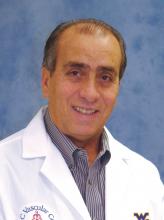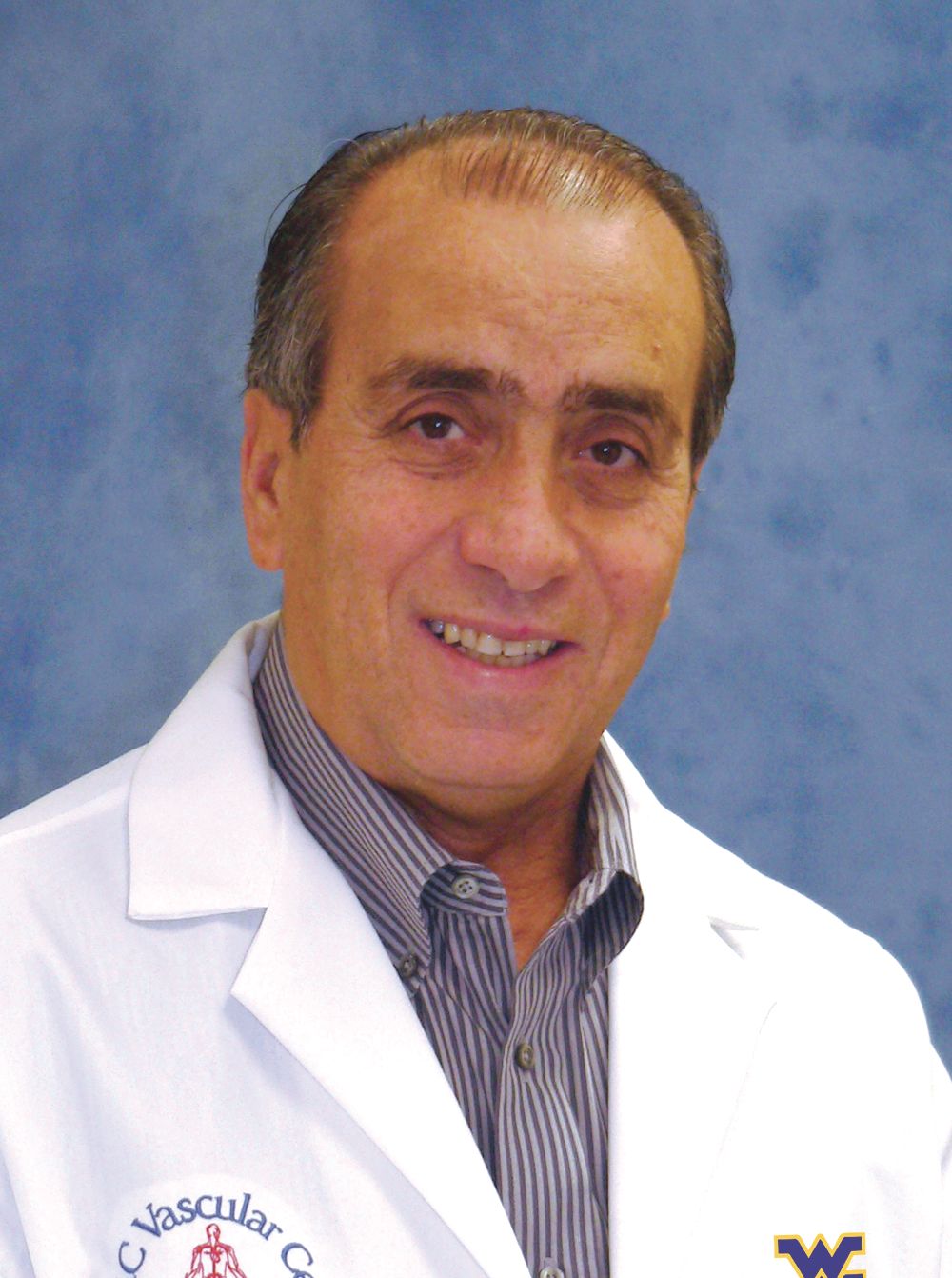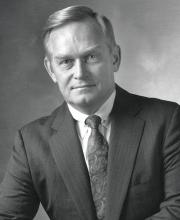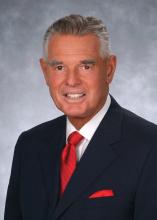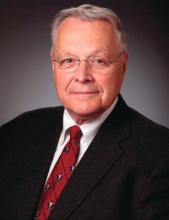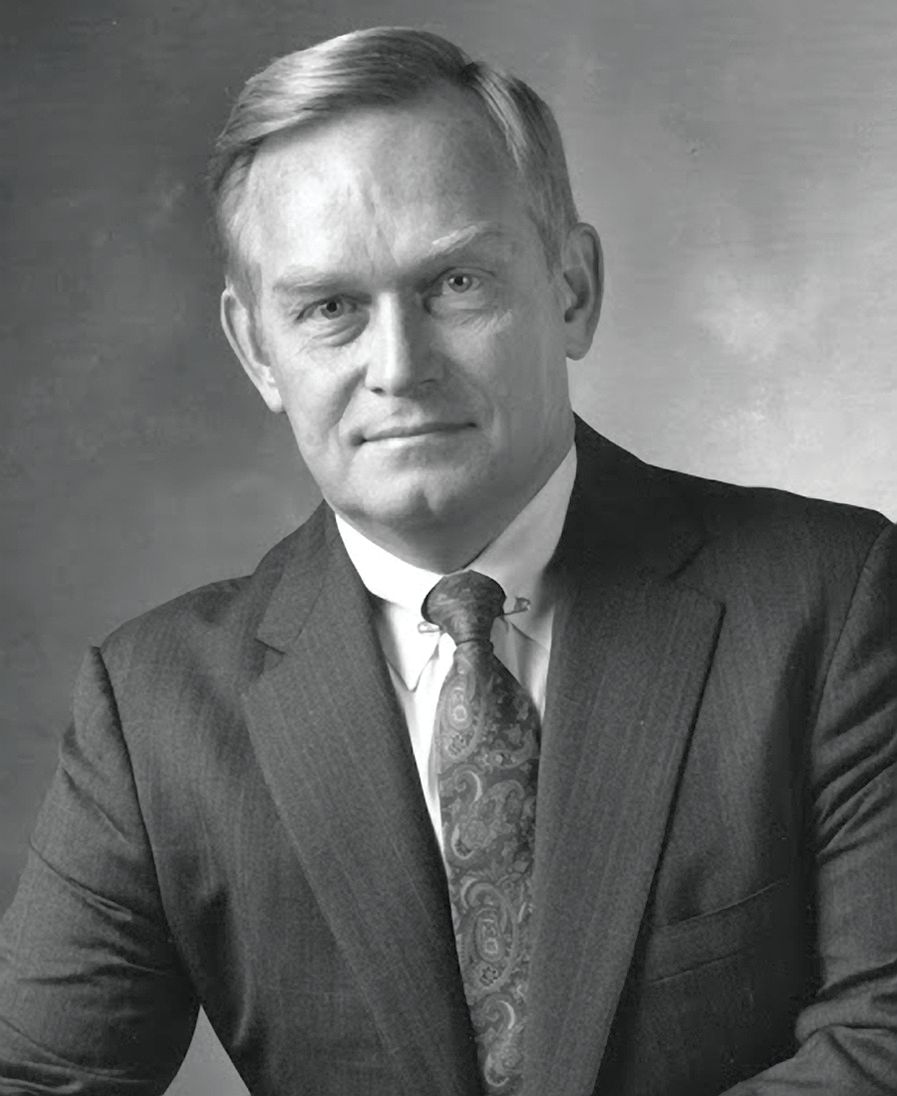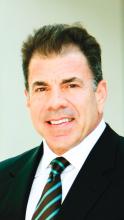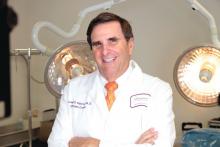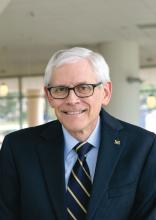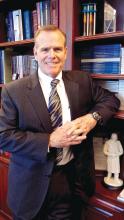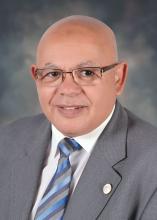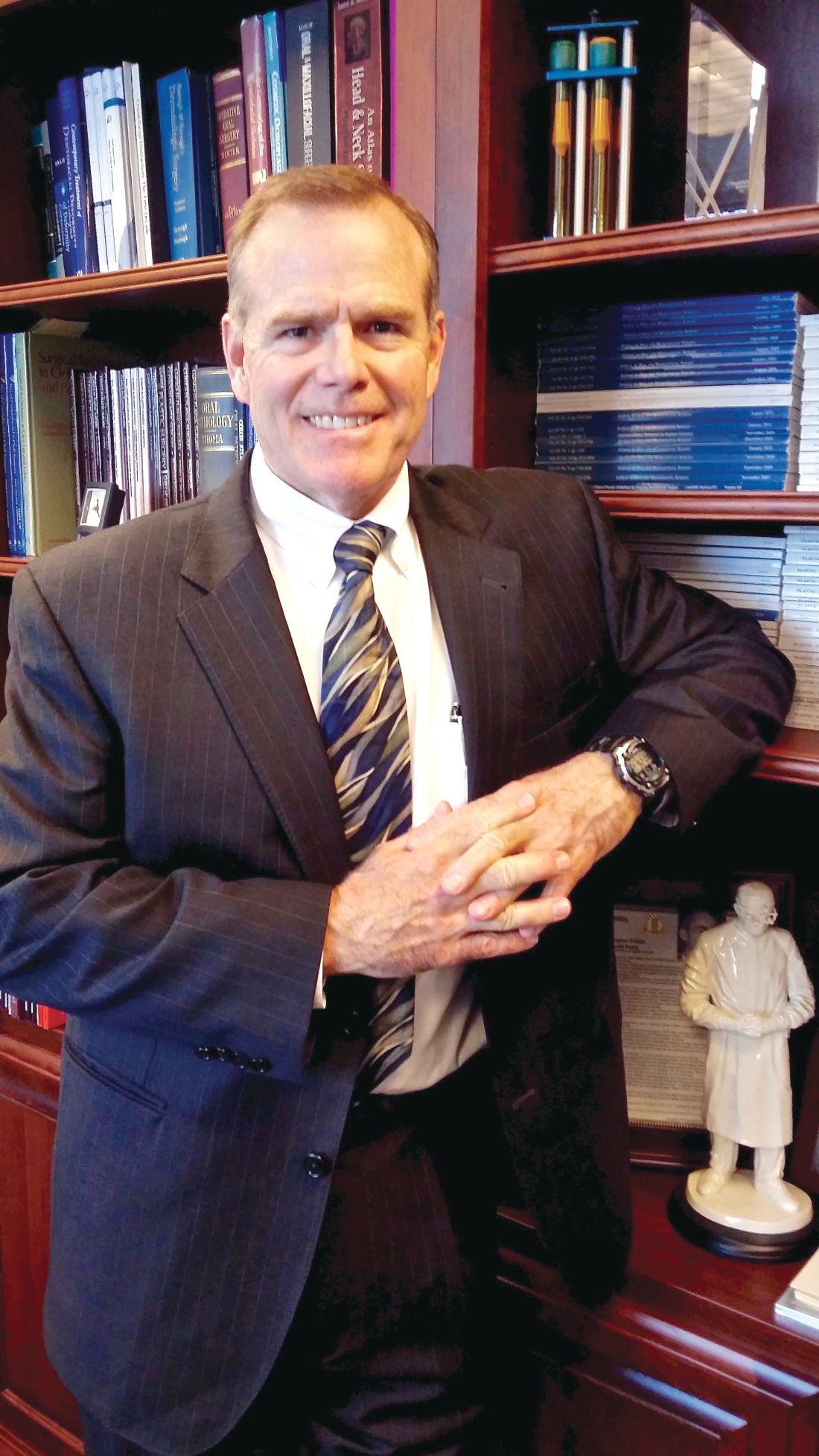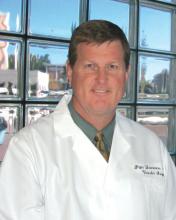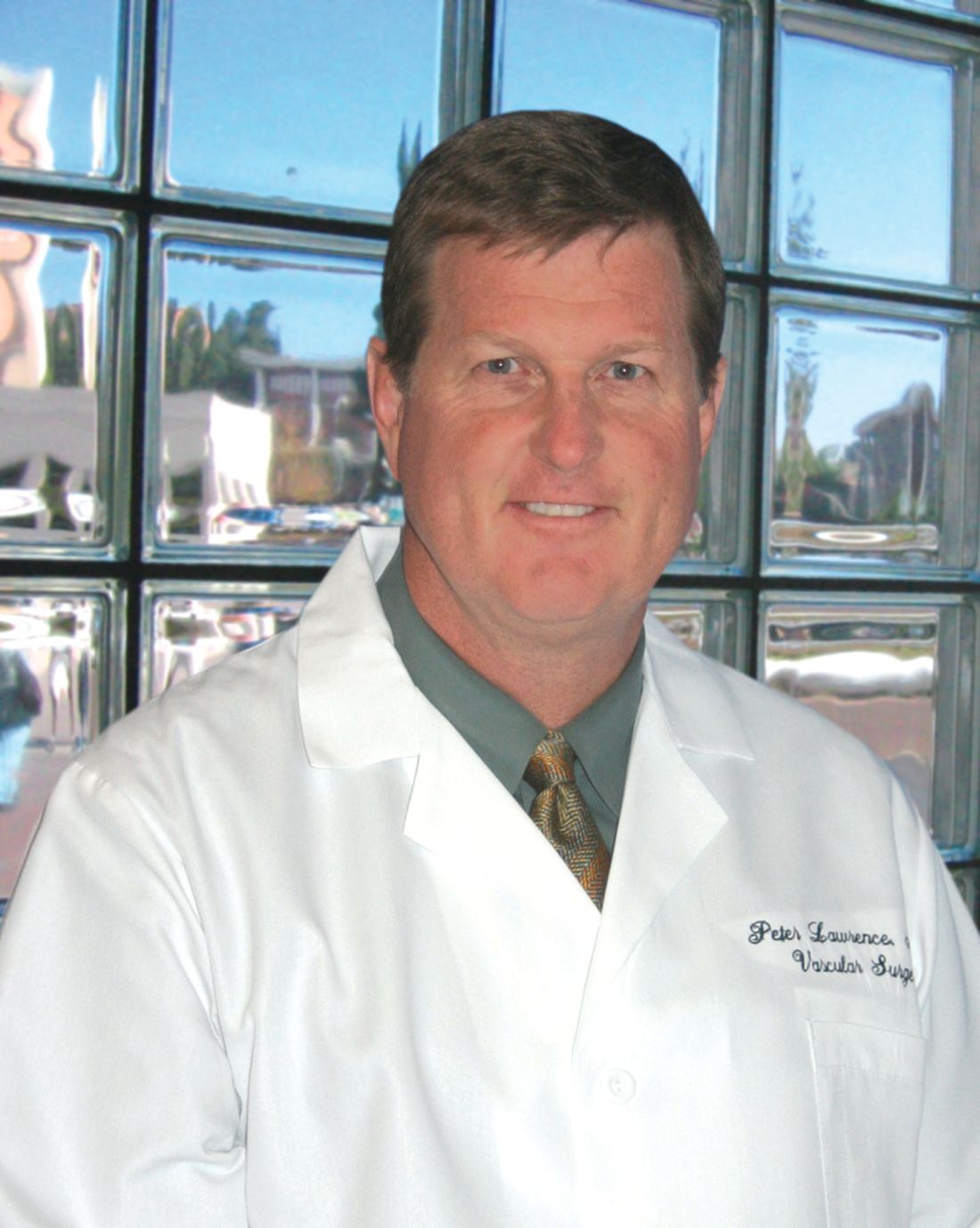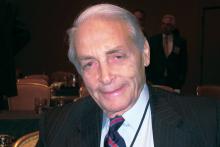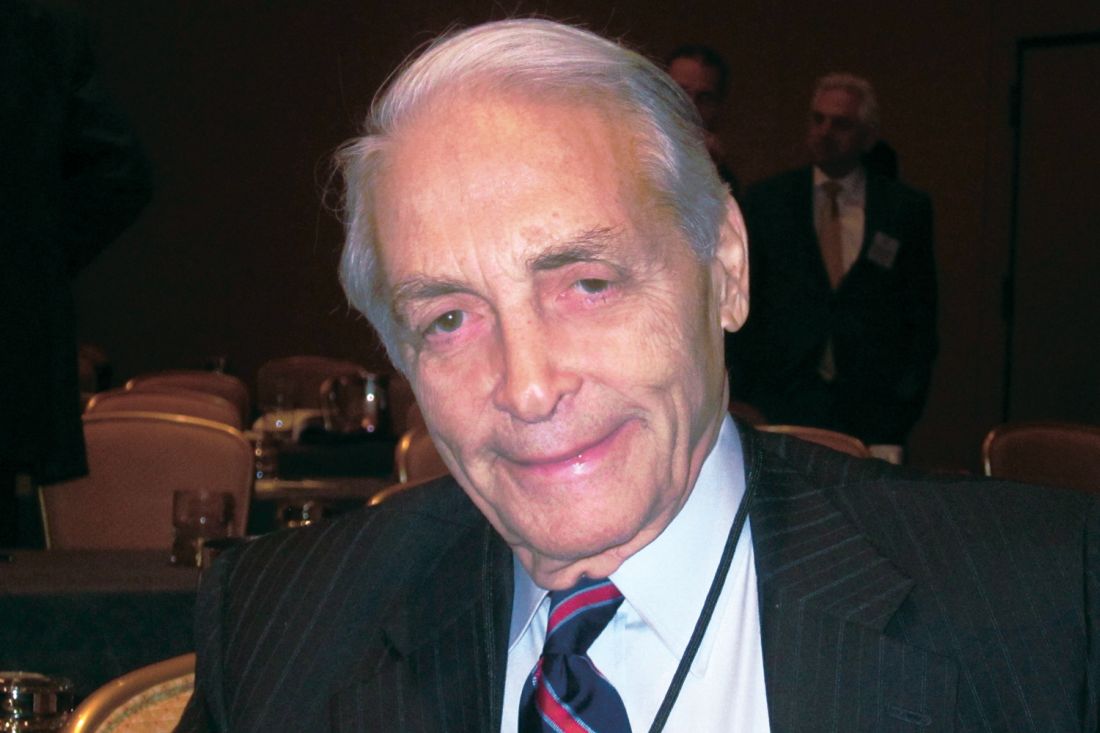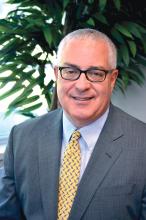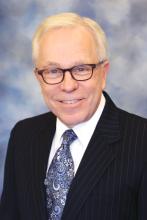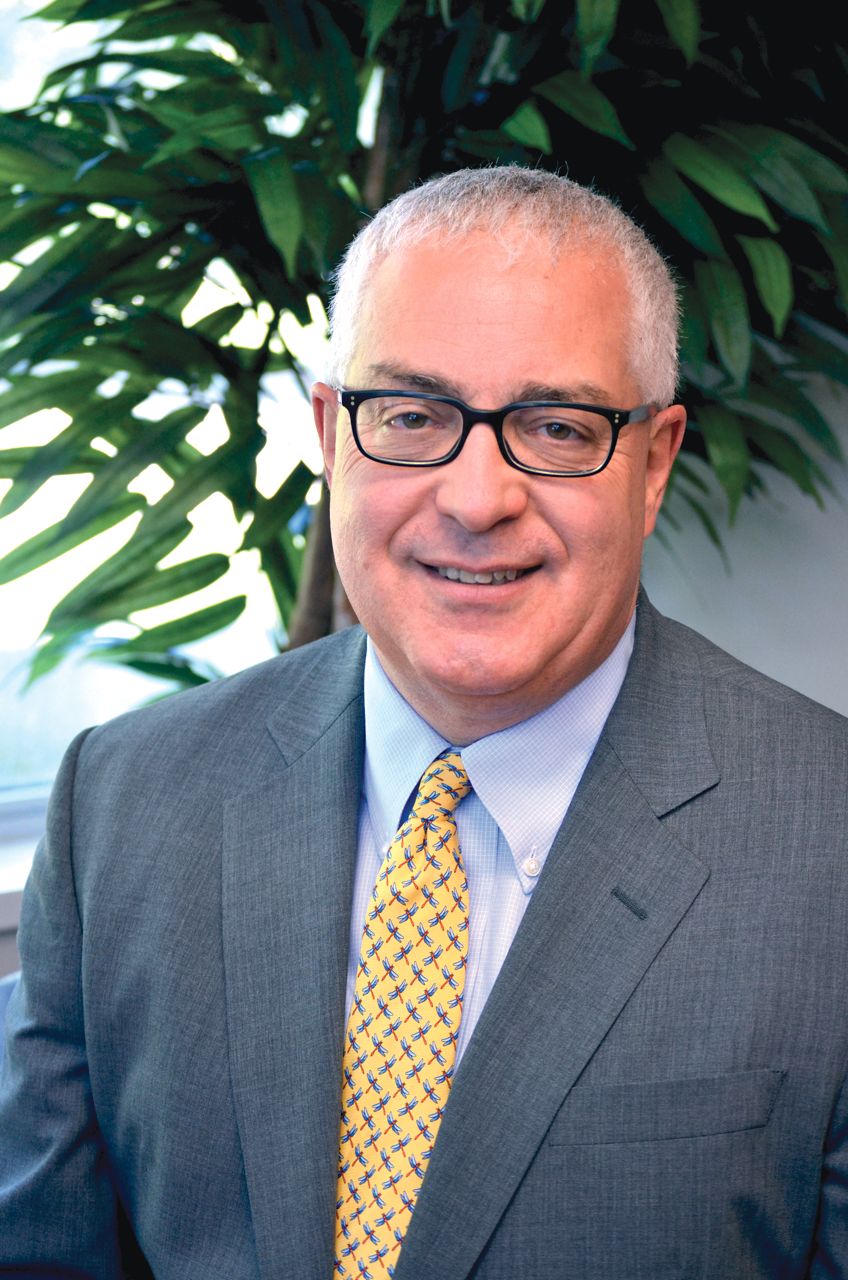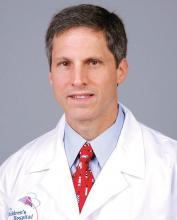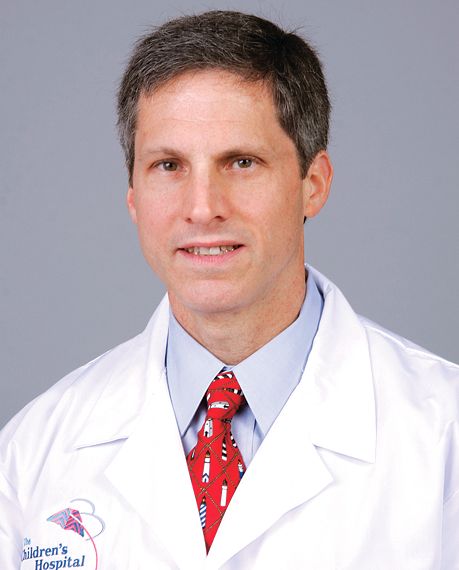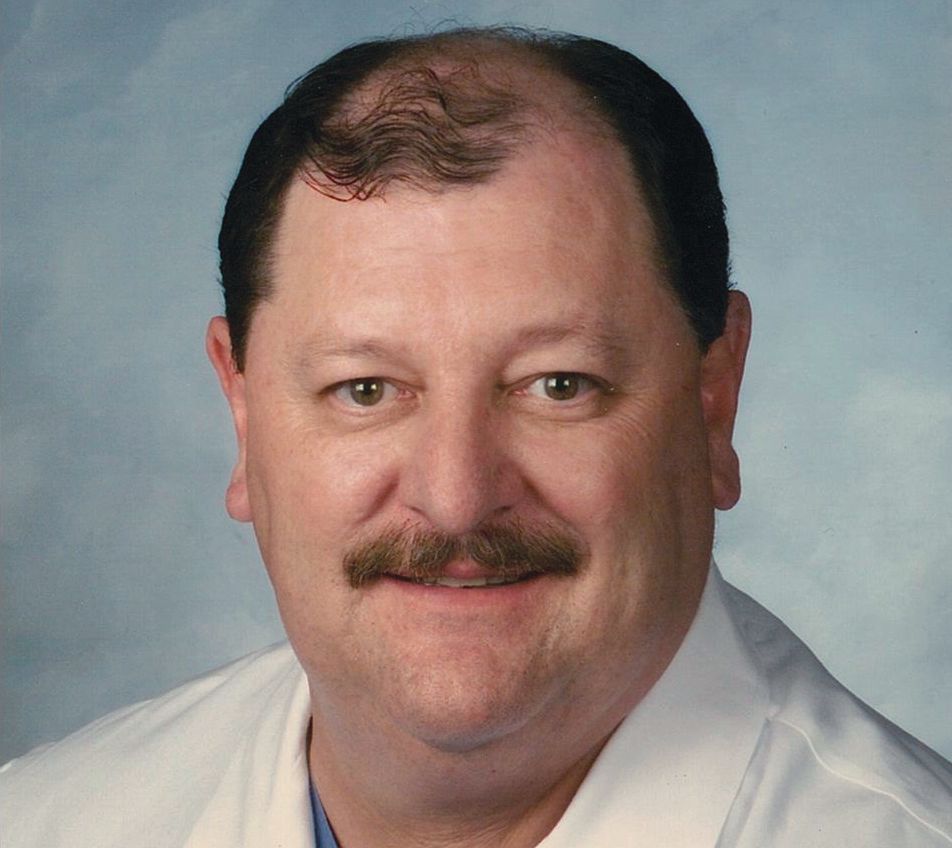User login
Session to Cover Controversial Topics in AAAs and EVAR Management
Current challenges in management of abdominal aortic aneurysms and endovascular aneurysm repairs will be highlighted during “New Developments in the Management of AAAs and EVAR” on Tuesday morning.
“The session will bring together top experts in the field to cover important, controversial topics in the management of AAAs, and, especially EVAR,” said co-moderator Dr. Ali F. AbuRahma, chief of vascular and endovascular surgery at West Virginia University.
The first presentation will cover an extremely challenging concept — whether inflammatory abdominal aortic aneurysms (AAAs) should be treated with conventional endovascular aneurysm repairs (EVAR), open repair, or immunosuppressive therapy with EVAR. Dr. Sonia Ronchey of Ospedale San Fillipo Neri in Rome and her colleague Dr. Nicola Mangialardi of Ospedale San Camillo Forlanini, Rome will offer a discussion of whether inflammatory AAAs are best treated by EVAR plus immunosuppressive drugs. “The etiology of these aneurysms is not always known,” continued Dr. AbuRahma. “However, many authorities agree that some type of immunologic elements may be the underlying causes of these AAAs, and, therefore, immunosuppressive therapy may be in order.”
This presentation will be followed by a debate on the management of EVAR for patients with hostile neck anatomy. The debaters will be Dr. Andres Schanzer of UMass Memorial and Dr. Dittmar Boeckler of the University of Heidelberg in Germany. Dr. Schanzer will argue that EVARs performed outside the instructions for use (IFU) are associated with higher rates of endoleak and sac growth. Dr. Boeckler will counter with his position that with modern endografts and improved technique, EVARs outside the IFU can have good outcomes with lower rates of endoleak, and sac growth. “Over the past decade, more and more studies have shown that an increasing number of patients are undergoing EVAR outside of the IFU – hostile neck anatomy – with mixed results,” explained Dr. AbuRahma. “Some have reported favorable results, at least in the early and mid-term follow-ups, while others have indicated unfavorable outcomes. This debate will shed some light on the ongoing controversy.”
Dr. Matt M. Thompson of Stanford School of Medicine and his colleagues Dr. Ian Loftus of St. Georges Vascular Institute in London and Dr. Marc L. Schermerhorn of Beth Israel Deaconess Medical Center will present the first argument that the RCTs are wrong. Dr. Janet Powell, honorary consultant at Imperial College in London will take the opposite position. “Several studies from the United States have advocated operating on AAAs of less than 5.5 cm in diameter for male patients and less than 5.0 cm in female patients with favorable results, especially using EVAR, which has a minimally invasive nature,“ stated Dr. AbuRahma. “The two presentations will elucidate the positions that agree and disagree with these findings.”
Physicians will leave the session with enhanced information on these controversial issues involved in AAA management and use of EVAR. “Attendees will have a better understanding of when to use endovascular therapy for inflammatory aneurysms,” concluded Dr. AbuRahama. “They will also have a better concept of whether an aneurysm of below 5.0 – 5.5 cm should receive intervention.”
Session 9:
New Development in the Management of AAAs and EVAR
6:40 a.m. – 7:20 am
Grand Ballroom West, 3rd Floor
Current challenges in management of abdominal aortic aneurysms and endovascular aneurysm repairs will be highlighted during “New Developments in the Management of AAAs and EVAR” on Tuesday morning.
“The session will bring together top experts in the field to cover important, controversial topics in the management of AAAs, and, especially EVAR,” said co-moderator Dr. Ali F. AbuRahma, chief of vascular and endovascular surgery at West Virginia University.
The first presentation will cover an extremely challenging concept — whether inflammatory abdominal aortic aneurysms (AAAs) should be treated with conventional endovascular aneurysm repairs (EVAR), open repair, or immunosuppressive therapy with EVAR. Dr. Sonia Ronchey of Ospedale San Fillipo Neri in Rome and her colleague Dr. Nicola Mangialardi of Ospedale San Camillo Forlanini, Rome will offer a discussion of whether inflammatory AAAs are best treated by EVAR plus immunosuppressive drugs. “The etiology of these aneurysms is not always known,” continued Dr. AbuRahma. “However, many authorities agree that some type of immunologic elements may be the underlying causes of these AAAs, and, therefore, immunosuppressive therapy may be in order.”
This presentation will be followed by a debate on the management of EVAR for patients with hostile neck anatomy. The debaters will be Dr. Andres Schanzer of UMass Memorial and Dr. Dittmar Boeckler of the University of Heidelberg in Germany. Dr. Schanzer will argue that EVARs performed outside the instructions for use (IFU) are associated with higher rates of endoleak and sac growth. Dr. Boeckler will counter with his position that with modern endografts and improved technique, EVARs outside the IFU can have good outcomes with lower rates of endoleak, and sac growth. “Over the past decade, more and more studies have shown that an increasing number of patients are undergoing EVAR outside of the IFU – hostile neck anatomy – with mixed results,” explained Dr. AbuRahma. “Some have reported favorable results, at least in the early and mid-term follow-ups, while others have indicated unfavorable outcomes. This debate will shed some light on the ongoing controversy.”
Dr. Matt M. Thompson of Stanford School of Medicine and his colleagues Dr. Ian Loftus of St. Georges Vascular Institute in London and Dr. Marc L. Schermerhorn of Beth Israel Deaconess Medical Center will present the first argument that the RCTs are wrong. Dr. Janet Powell, honorary consultant at Imperial College in London will take the opposite position. “Several studies from the United States have advocated operating on AAAs of less than 5.5 cm in diameter for male patients and less than 5.0 cm in female patients with favorable results, especially using EVAR, which has a minimally invasive nature,“ stated Dr. AbuRahma. “The two presentations will elucidate the positions that agree and disagree with these findings.”
Physicians will leave the session with enhanced information on these controversial issues involved in AAA management and use of EVAR. “Attendees will have a better understanding of when to use endovascular therapy for inflammatory aneurysms,” concluded Dr. AbuRahama. “They will also have a better concept of whether an aneurysm of below 5.0 – 5.5 cm should receive intervention.”
Session 9:
New Development in the Management of AAAs and EVAR
6:40 a.m. – 7:20 am
Grand Ballroom West, 3rd Floor
Current challenges in management of abdominal aortic aneurysms and endovascular aneurysm repairs will be highlighted during “New Developments in the Management of AAAs and EVAR” on Tuesday morning.
“The session will bring together top experts in the field to cover important, controversial topics in the management of AAAs, and, especially EVAR,” said co-moderator Dr. Ali F. AbuRahma, chief of vascular and endovascular surgery at West Virginia University.
The first presentation will cover an extremely challenging concept — whether inflammatory abdominal aortic aneurysms (AAAs) should be treated with conventional endovascular aneurysm repairs (EVAR), open repair, or immunosuppressive therapy with EVAR. Dr. Sonia Ronchey of Ospedale San Fillipo Neri in Rome and her colleague Dr. Nicola Mangialardi of Ospedale San Camillo Forlanini, Rome will offer a discussion of whether inflammatory AAAs are best treated by EVAR plus immunosuppressive drugs. “The etiology of these aneurysms is not always known,” continued Dr. AbuRahma. “However, many authorities agree that some type of immunologic elements may be the underlying causes of these AAAs, and, therefore, immunosuppressive therapy may be in order.”
This presentation will be followed by a debate on the management of EVAR for patients with hostile neck anatomy. The debaters will be Dr. Andres Schanzer of UMass Memorial and Dr. Dittmar Boeckler of the University of Heidelberg in Germany. Dr. Schanzer will argue that EVARs performed outside the instructions for use (IFU) are associated with higher rates of endoleak and sac growth. Dr. Boeckler will counter with his position that with modern endografts and improved technique, EVARs outside the IFU can have good outcomes with lower rates of endoleak, and sac growth. “Over the past decade, more and more studies have shown that an increasing number of patients are undergoing EVAR outside of the IFU – hostile neck anatomy – with mixed results,” explained Dr. AbuRahma. “Some have reported favorable results, at least in the early and mid-term follow-ups, while others have indicated unfavorable outcomes. This debate will shed some light on the ongoing controversy.”
Dr. Matt M. Thompson of Stanford School of Medicine and his colleagues Dr. Ian Loftus of St. Georges Vascular Institute in London and Dr. Marc L. Schermerhorn of Beth Israel Deaconess Medical Center will present the first argument that the RCTs are wrong. Dr. Janet Powell, honorary consultant at Imperial College in London will take the opposite position. “Several studies from the United States have advocated operating on AAAs of less than 5.5 cm in diameter for male patients and less than 5.0 cm in female patients with favorable results, especially using EVAR, which has a minimally invasive nature,“ stated Dr. AbuRahma. “The two presentations will elucidate the positions that agree and disagree with these findings.”
Physicians will leave the session with enhanced information on these controversial issues involved in AAA management and use of EVAR. “Attendees will have a better understanding of when to use endovascular therapy for inflammatory aneurysms,” concluded Dr. AbuRahama. “They will also have a better concept of whether an aneurysm of below 5.0 – 5.5 cm should receive intervention.”
Session 9:
New Development in the Management of AAAs and EVAR
6:40 a.m. – 7:20 am
Grand Ballroom West, 3rd Floor
Remembering the Giants Who Have Passed
On Wednesday morning, the VEITHsymposium will give tribute to three prominent vascular surgeons who passed away this year: Dr. Richard F. (Dick) Kempczinski (1940-2017), Dr. Edward B. (Ted) Diethrich (1935-2017), and Dr. Clifford J. (Cliff) Buckley (1936-2017).
Each will receive a memorial encomium by one of their valued friends and colleagues in this special session. All three men were renowned for their contributions to vascular research, teaching, mentoring, and patient care.
In 1974, he joined the University of Colorado Medical Center in Denver as an assistant professor of surgery and was the chief of vascular surgery at the VA Medical Center. In 1979, he became associate professor of surgery and chief of vascular surgery at the University of Cincinnati Medical Center where he remained until his retirement.
Among his many contributions to the field of vascular surgery included helping to found the Rocky Mountain Vascular Society, helping to establish the Intersocietal Accreditation Commission for vascular diagnostic laboratories, for which he served as second President. In 1992, he was elected President of the Midwestern Vascular Surgical Society. In 2002, he received the Pioneer Award from the Society for Vascular Technology. He was an author of more than 150 original articles and book chapters, and an author or editor of seven books.
Dr. Kempczinski’s many important contributions to the vascular literature included serving as associate editor of Rutherford’s Vascular Surgery, and his service as a member of the editorial boards of the Journal of Vascular Surgery and Perspectives in Vascular Surgery and Endovascular Therapy.
Dr. Kempczinksi will be memorialized by Dr. Jerry Goldstone, Professor of Surgery Emeritus, Case Western Reserve University School of Medicine, Cleveland, Ohio.
In 1971, Dr. Diethrich established the Arizona Heart Institute in Phoenix and its research organization, the Arizona Heart Foundation. Among its many noted accomplishments, The Arizona Heart Institute established the first outpatient heart clinic in 1971, and the first outpatient cardiac catheterization laboratory in 1979. Dr. Diethrich performed the first heart transplantation in Phoenix in 1984 and the first heart-lung transplantation in Arizona in 1985. Dr. Diethrich founded the Arizona Heart Hospital in 1998 and served as its medical director and chief of cardiovascular surgery from 1998 to 2010.
Perhaps among his most important accomplishment in the field of vascular surgery was his staunch advocacy of the endovascular revolution. He was an innovator in the development and commercialization of endografts. Dr. Diethrich performed the world’s first endovascular aortic aneurysm repairs for a ruptured abdominal aortic aneurysm in 2000, and he was responsible for the creation of the International Society of Endovascular Specialists.
Dr. Diethrich will be remembered by Dr. Ali F. AbuRahma, professor of surgery; chief of vascular & endovascular surgery; director, vascular surgery, West Virginia University.
Dr. Buckley later served as professor of surgery at Texas A&M University Health Science Center College of Medicine, and as associate chief of staff, surgical services, Central Texas Veterans Health Care System, Temple, Texas. He also served as program director for the largest surgical residency in the United States military and was in the private practice of vascular surgery in San Antonio for 15 years.
Dr. Buckley was a pioneer in the endovascular revolution, publishing extensively on the methodology of endovascular repair in almost every major vascular bed, including carotid arteries, abdominal aortic aneurysms, and the lower extremities, authoring over 70 peer-reviewed articles, and six book chapters.
Dr. Buckley was a Fellow of the American College of Surgeons. He was also a Distinguished Fellow of the Society for Vascular Surgery, the International Society of Endovascular Specialists, and the Texas Surgical Society, which he served as President. He was also President of the International Society of Endovascular Specialists.
Dr. Buckley will receive a tribute from Frank J. Veith, MD, Professor of Surgery, Cleveland Clinic and New York University.
Session 34: Tributes to Giants
Wednesday, 10:15 a.m. - 10:32 a.m.
On Wednesday morning, the VEITHsymposium will give tribute to three prominent vascular surgeons who passed away this year: Dr. Richard F. (Dick) Kempczinski (1940-2017), Dr. Edward B. (Ted) Diethrich (1935-2017), and Dr. Clifford J. (Cliff) Buckley (1936-2017).
Each will receive a memorial encomium by one of their valued friends and colleagues in this special session. All three men were renowned for their contributions to vascular research, teaching, mentoring, and patient care.
In 1974, he joined the University of Colorado Medical Center in Denver as an assistant professor of surgery and was the chief of vascular surgery at the VA Medical Center. In 1979, he became associate professor of surgery and chief of vascular surgery at the University of Cincinnati Medical Center where he remained until his retirement.
Among his many contributions to the field of vascular surgery included helping to found the Rocky Mountain Vascular Society, helping to establish the Intersocietal Accreditation Commission for vascular diagnostic laboratories, for which he served as second President. In 1992, he was elected President of the Midwestern Vascular Surgical Society. In 2002, he received the Pioneer Award from the Society for Vascular Technology. He was an author of more than 150 original articles and book chapters, and an author or editor of seven books.
Dr. Kempczinski’s many important contributions to the vascular literature included serving as associate editor of Rutherford’s Vascular Surgery, and his service as a member of the editorial boards of the Journal of Vascular Surgery and Perspectives in Vascular Surgery and Endovascular Therapy.
Dr. Kempczinksi will be memorialized by Dr. Jerry Goldstone, Professor of Surgery Emeritus, Case Western Reserve University School of Medicine, Cleveland, Ohio.
In 1971, Dr. Diethrich established the Arizona Heart Institute in Phoenix and its research organization, the Arizona Heart Foundation. Among its many noted accomplishments, The Arizona Heart Institute established the first outpatient heart clinic in 1971, and the first outpatient cardiac catheterization laboratory in 1979. Dr. Diethrich performed the first heart transplantation in Phoenix in 1984 and the first heart-lung transplantation in Arizona in 1985. Dr. Diethrich founded the Arizona Heart Hospital in 1998 and served as its medical director and chief of cardiovascular surgery from 1998 to 2010.
Perhaps among his most important accomplishment in the field of vascular surgery was his staunch advocacy of the endovascular revolution. He was an innovator in the development and commercialization of endografts. Dr. Diethrich performed the world’s first endovascular aortic aneurysm repairs for a ruptured abdominal aortic aneurysm in 2000, and he was responsible for the creation of the International Society of Endovascular Specialists.
Dr. Diethrich will be remembered by Dr. Ali F. AbuRahma, professor of surgery; chief of vascular & endovascular surgery; director, vascular surgery, West Virginia University.
Dr. Buckley later served as professor of surgery at Texas A&M University Health Science Center College of Medicine, and as associate chief of staff, surgical services, Central Texas Veterans Health Care System, Temple, Texas. He also served as program director for the largest surgical residency in the United States military and was in the private practice of vascular surgery in San Antonio for 15 years.
Dr. Buckley was a pioneer in the endovascular revolution, publishing extensively on the methodology of endovascular repair in almost every major vascular bed, including carotid arteries, abdominal aortic aneurysms, and the lower extremities, authoring over 70 peer-reviewed articles, and six book chapters.
Dr. Buckley was a Fellow of the American College of Surgeons. He was also a Distinguished Fellow of the Society for Vascular Surgery, the International Society of Endovascular Specialists, and the Texas Surgical Society, which he served as President. He was also President of the International Society of Endovascular Specialists.
Dr. Buckley will receive a tribute from Frank J. Veith, MD, Professor of Surgery, Cleveland Clinic and New York University.
Session 34: Tributes to Giants
Wednesday, 10:15 a.m. - 10:32 a.m.
On Wednesday morning, the VEITHsymposium will give tribute to three prominent vascular surgeons who passed away this year: Dr. Richard F. (Dick) Kempczinski (1940-2017), Dr. Edward B. (Ted) Diethrich (1935-2017), and Dr. Clifford J. (Cliff) Buckley (1936-2017).
Each will receive a memorial encomium by one of their valued friends and colleagues in this special session. All three men were renowned for their contributions to vascular research, teaching, mentoring, and patient care.
In 1974, he joined the University of Colorado Medical Center in Denver as an assistant professor of surgery and was the chief of vascular surgery at the VA Medical Center. In 1979, he became associate professor of surgery and chief of vascular surgery at the University of Cincinnati Medical Center where he remained until his retirement.
Among his many contributions to the field of vascular surgery included helping to found the Rocky Mountain Vascular Society, helping to establish the Intersocietal Accreditation Commission for vascular diagnostic laboratories, for which he served as second President. In 1992, he was elected President of the Midwestern Vascular Surgical Society. In 2002, he received the Pioneer Award from the Society for Vascular Technology. He was an author of more than 150 original articles and book chapters, and an author or editor of seven books.
Dr. Kempczinski’s many important contributions to the vascular literature included serving as associate editor of Rutherford’s Vascular Surgery, and his service as a member of the editorial boards of the Journal of Vascular Surgery and Perspectives in Vascular Surgery and Endovascular Therapy.
Dr. Kempczinksi will be memorialized by Dr. Jerry Goldstone, Professor of Surgery Emeritus, Case Western Reserve University School of Medicine, Cleveland, Ohio.
In 1971, Dr. Diethrich established the Arizona Heart Institute in Phoenix and its research organization, the Arizona Heart Foundation. Among its many noted accomplishments, The Arizona Heart Institute established the first outpatient heart clinic in 1971, and the first outpatient cardiac catheterization laboratory in 1979. Dr. Diethrich performed the first heart transplantation in Phoenix in 1984 and the first heart-lung transplantation in Arizona in 1985. Dr. Diethrich founded the Arizona Heart Hospital in 1998 and served as its medical director and chief of cardiovascular surgery from 1998 to 2010.
Perhaps among his most important accomplishment in the field of vascular surgery was his staunch advocacy of the endovascular revolution. He was an innovator in the development and commercialization of endografts. Dr. Diethrich performed the world’s first endovascular aortic aneurysm repairs for a ruptured abdominal aortic aneurysm in 2000, and he was responsible for the creation of the International Society of Endovascular Specialists.
Dr. Diethrich will be remembered by Dr. Ali F. AbuRahma, professor of surgery; chief of vascular & endovascular surgery; director, vascular surgery, West Virginia University.
Dr. Buckley later served as professor of surgery at Texas A&M University Health Science Center College of Medicine, and as associate chief of staff, surgical services, Central Texas Veterans Health Care System, Temple, Texas. He also served as program director for the largest surgical residency in the United States military and was in the private practice of vascular surgery in San Antonio for 15 years.
Dr. Buckley was a pioneer in the endovascular revolution, publishing extensively on the methodology of endovascular repair in almost every major vascular bed, including carotid arteries, abdominal aortic aneurysms, and the lower extremities, authoring over 70 peer-reviewed articles, and six book chapters.
Dr. Buckley was a Fellow of the American College of Surgeons. He was also a Distinguished Fellow of the Society for Vascular Surgery, the International Society of Endovascular Specialists, and the Texas Surgical Society, which he served as President. He was also President of the International Society of Endovascular Specialists.
Dr. Buckley will receive a tribute from Frank J. Veith, MD, Professor of Surgery, Cleveland Clinic and New York University.
Session 34: Tributes to Giants
Wednesday, 10:15 a.m. - 10:32 a.m.
Understanding the Causes of Venous Pressure
Developing an effective treatment plan for patients with venous disease hinges on an thorough clinical evaluation and a keen understanding of venous anatomy and physiology, both of which will be the focus of the Thursday morning session, “Venous Clinical Examination and Hemodynamics.”
“Less invasive treatments are now available because of the advent of new technologies,” said co-moderator Dr. Jose I. Almeida, director of the Miami Vein Center and voluntary professor of surgery at the University of Miami School of Medicine. “However, the proper treatment of patients with advanced venous disease has little to do with the new toys available on the shelf. Rather, it depends on a proper understanding of the fundamental problem: What causes increased venous pressure?”
Presentations will focus on answering that question. “Without an accurate physician assessment, one cannot apply an effective treatment plan for a patient with venous disease,” said Dr. Almeida. Session co-moderators include Dr. Lowell S. Kabnick, director of the New York University Vein Center, and Dr. Thomas W. Wakefield, vascular surgery section head at the University of Michigan Cardiovascular Center.
“The session begins with identifying symptoms and signs of venous disease, scoring the disease severity with a validated tool, and classifying the severity on a scale of one to six,” said Dr. Almeida, who starts off the session with his own review of the CEAP classification for venous disease – Clinical, Etiologic, Anatomic and Pathophysiologic – and the Venous Clinical Severity Score system. “Patient reported outcomes are now increasingly important to all stakeholders in venous disease space, and these principles will be summarized,” he said.
The session then moves into the anatomy and physiology of venous disorders. “Proper treatment hinges on the understanding of superficial reflux pathways and how to identify them with the ultrasound imaging,” said Dr. Almeida “Venous hypertension can also be caused by obstruction. The hemodynamics from the perspective of our European colleagues will be presented – and the controversial treatments used based on these hemodynamic principles will be reviewed.”
Dr. Bo G. Eklof of the University of Lund will provide the European perspective with an update on the Venous Symposium Consensus (SYMVein), a collaboration of the European Venous Forum and International Working Group to develop a consensus on venous symptoms.
Dr. Kabnick will then explore outcome assessment of central venous disease, and Dr. Wakefield will review the evidence on the pathophysiology of varicose veins. Dr. Seshadri Raju, vascular surgeon at St. Dominic Hospital will explore emerging concepts in venous flow and pressure.
“This will be the talk that ties in the concepts of flow and pressure and how each contributes to the final common pathway of venous disease—namely, venous hypertension,” Dr. Almeida said of Dr. Raju’s presentation.
In keeping with a deeper dive into venous anatomy, Dr. Neil M. Khilnani, associate professor of radiology at Weill Medical College of Cornell University, will discuss the role of duplex ultrasound in identifying reflux pathways, and Dr. Brajesh K. Lal, professor at University of Maryland School of Medicine, will present the latest evidence on venous return pathology. Then Dr. Byung-Boong Lee, professor of surgery at George Washington School of Medicine, will provide an update on the International Union of Phlebology consensus on chronic venous disease
Two presenters from the Riviera Vein Institute in the Principality of Monaco will close out the session. Research chair Dr. Sylvain Chastanet will present 10-year results of the ASVAL – the French acronym for selective ablation of varicose veins under local anesthesia – method for treating varicose veins. And Dr. Paul Pittaluga will wrap things up by analyzing the role of the saphenofemoral junction in planning treatment for varicose veins.
Developing an effective treatment plan for patients with venous disease hinges on an thorough clinical evaluation and a keen understanding of venous anatomy and physiology, both of which will be the focus of the Thursday morning session, “Venous Clinical Examination and Hemodynamics.”
“Less invasive treatments are now available because of the advent of new technologies,” said co-moderator Dr. Jose I. Almeida, director of the Miami Vein Center and voluntary professor of surgery at the University of Miami School of Medicine. “However, the proper treatment of patients with advanced venous disease has little to do with the new toys available on the shelf. Rather, it depends on a proper understanding of the fundamental problem: What causes increased venous pressure?”
Presentations will focus on answering that question. “Without an accurate physician assessment, one cannot apply an effective treatment plan for a patient with venous disease,” said Dr. Almeida. Session co-moderators include Dr. Lowell S. Kabnick, director of the New York University Vein Center, and Dr. Thomas W. Wakefield, vascular surgery section head at the University of Michigan Cardiovascular Center.
“The session begins with identifying symptoms and signs of venous disease, scoring the disease severity with a validated tool, and classifying the severity on a scale of one to six,” said Dr. Almeida, who starts off the session with his own review of the CEAP classification for venous disease – Clinical, Etiologic, Anatomic and Pathophysiologic – and the Venous Clinical Severity Score system. “Patient reported outcomes are now increasingly important to all stakeholders in venous disease space, and these principles will be summarized,” he said.
The session then moves into the anatomy and physiology of venous disorders. “Proper treatment hinges on the understanding of superficial reflux pathways and how to identify them with the ultrasound imaging,” said Dr. Almeida “Venous hypertension can also be caused by obstruction. The hemodynamics from the perspective of our European colleagues will be presented – and the controversial treatments used based on these hemodynamic principles will be reviewed.”
Dr. Bo G. Eklof of the University of Lund will provide the European perspective with an update on the Venous Symposium Consensus (SYMVein), a collaboration of the European Venous Forum and International Working Group to develop a consensus on venous symptoms.
Dr. Kabnick will then explore outcome assessment of central venous disease, and Dr. Wakefield will review the evidence on the pathophysiology of varicose veins. Dr. Seshadri Raju, vascular surgeon at St. Dominic Hospital will explore emerging concepts in venous flow and pressure.
“This will be the talk that ties in the concepts of flow and pressure and how each contributes to the final common pathway of venous disease—namely, venous hypertension,” Dr. Almeida said of Dr. Raju’s presentation.
In keeping with a deeper dive into venous anatomy, Dr. Neil M. Khilnani, associate professor of radiology at Weill Medical College of Cornell University, will discuss the role of duplex ultrasound in identifying reflux pathways, and Dr. Brajesh K. Lal, professor at University of Maryland School of Medicine, will present the latest evidence on venous return pathology. Then Dr. Byung-Boong Lee, professor of surgery at George Washington School of Medicine, will provide an update on the International Union of Phlebology consensus on chronic venous disease
Two presenters from the Riviera Vein Institute in the Principality of Monaco will close out the session. Research chair Dr. Sylvain Chastanet will present 10-year results of the ASVAL – the French acronym for selective ablation of varicose veins under local anesthesia – method for treating varicose veins. And Dr. Paul Pittaluga will wrap things up by analyzing the role of the saphenofemoral junction in planning treatment for varicose veins.
Developing an effective treatment plan for patients with venous disease hinges on an thorough clinical evaluation and a keen understanding of venous anatomy and physiology, both of which will be the focus of the Thursday morning session, “Venous Clinical Examination and Hemodynamics.”
“Less invasive treatments are now available because of the advent of new technologies,” said co-moderator Dr. Jose I. Almeida, director of the Miami Vein Center and voluntary professor of surgery at the University of Miami School of Medicine. “However, the proper treatment of patients with advanced venous disease has little to do with the new toys available on the shelf. Rather, it depends on a proper understanding of the fundamental problem: What causes increased venous pressure?”
Presentations will focus on answering that question. “Without an accurate physician assessment, one cannot apply an effective treatment plan for a patient with venous disease,” said Dr. Almeida. Session co-moderators include Dr. Lowell S. Kabnick, director of the New York University Vein Center, and Dr. Thomas W. Wakefield, vascular surgery section head at the University of Michigan Cardiovascular Center.
“The session begins with identifying symptoms and signs of venous disease, scoring the disease severity with a validated tool, and classifying the severity on a scale of one to six,” said Dr. Almeida, who starts off the session with his own review of the CEAP classification for venous disease – Clinical, Etiologic, Anatomic and Pathophysiologic – and the Venous Clinical Severity Score system. “Patient reported outcomes are now increasingly important to all stakeholders in venous disease space, and these principles will be summarized,” he said.
The session then moves into the anatomy and physiology of venous disorders. “Proper treatment hinges on the understanding of superficial reflux pathways and how to identify them with the ultrasound imaging,” said Dr. Almeida “Venous hypertension can also be caused by obstruction. The hemodynamics from the perspective of our European colleagues will be presented – and the controversial treatments used based on these hemodynamic principles will be reviewed.”
Dr. Bo G. Eklof of the University of Lund will provide the European perspective with an update on the Venous Symposium Consensus (SYMVein), a collaboration of the European Venous Forum and International Working Group to develop a consensus on venous symptoms.
Dr. Kabnick will then explore outcome assessment of central venous disease, and Dr. Wakefield will review the evidence on the pathophysiology of varicose veins. Dr. Seshadri Raju, vascular surgeon at St. Dominic Hospital will explore emerging concepts in venous flow and pressure.
“This will be the talk that ties in the concepts of flow and pressure and how each contributes to the final common pathway of venous disease—namely, venous hypertension,” Dr. Almeida said of Dr. Raju’s presentation.
In keeping with a deeper dive into venous anatomy, Dr. Neil M. Khilnani, associate professor of radiology at Weill Medical College of Cornell University, will discuss the role of duplex ultrasound in identifying reflux pathways, and Dr. Brajesh K. Lal, professor at University of Maryland School of Medicine, will present the latest evidence on venous return pathology. Then Dr. Byung-Boong Lee, professor of surgery at George Washington School of Medicine, will provide an update on the International Union of Phlebology consensus on chronic venous disease
Two presenters from the Riviera Vein Institute in the Principality of Monaco will close out the session. Research chair Dr. Sylvain Chastanet will present 10-year results of the ASVAL – the French acronym for selective ablation of varicose veins under local anesthesia – method for treating varicose veins. And Dr. Paul Pittaluga will wrap things up by analyzing the role of the saphenofemoral junction in planning treatment for varicose veins.
Session to Explore Surgical Issues in Vascular Malformation Management
Insight into treatment of complex vascular malformations will be the focus of “Surgical Issues in Vascular Malformation Management” on Tuesday afternoon.
The session will cover surgical techniques and the issues that each of these techniques raise. In addition to presentatons, this year’s schedule will include a debate. “This program addition will draw attention to differences in treatment philosophy and patient management and should be very interesting,” said co-moderator Dr. Randolph C. Robinson, clinical professor at the University of Colorado, Denver.
Surgical resection has been the treatment of choice but has resulted in significant morbidity and recurrence. Endovascular therapy with super-selective catheters delivering different embolic agents and use of direct puncture technique has rapidly replaced surgery. “There has been an important evolution occurring in the treatment of vascular anomalies using advanced sclerosis techniques to neutralize the lesion. Once the sclerosis is completed, then the surgery to restore the normal contours and function is less invasive and deforming,” stated Dr. Robinson.
Those in attendance will learn about managing these complex vascular malformations from a reconstructive standpoint, and also how to coordinate with interventional radiologists for timing corrections. Many reconstructive procedures are staged operations and must, therefore, be sequenced.
“Vascular malformations are in anatomically and surgically difficult or inaccessible areas, which has led to increased reliance on interventional radiology to manage them,” said Dr. Radwan. “The surgical goal should be improvement of symptoms and quality of life beside the treatment of life-threatening complications rather than eradication of the lesion at the expense of surgical morbidity.”
“I also look forward to hearing the latest information from two physicians from our Denver team who have excellent experience treating very difficult and large life-threatening deformities,” Dr. Robinson continued. Dr. Edward Hepworth, founder of Colorado Center for Skull Base Craniofacial Disorders will discuss otolaryngology surgical and endoscopic issues. Dr. Tanya M. Oswald of the Swedish Medical Center will speak on plastic surgery reconstruction issues. Dr. Robinson will be giving a talk on surgical reconstruction and patient normalization post-endovascular sclerotherapy.
“We are going to have very interesting debates presented by four eminent speakers providing the pros and cons of whether endovascular management is the treatment of choice for managing vascular malformations without the need for open surgery,” added Dr. Radwan. Dr. Robinson and Dr. Hepworth will present the pro position. Dr. Kim and Dr. Oswald will present the con argument. There will also be time for rebuttal.
Attendees will leave the session with a new outlook on management of complex vascular malformations. “They will understand that treatment is not done in isolation but involves a team with specialization in regional management of these deformities before or after endovascular sclerotherapy,” said Dr. Robinson. Dr. Radwan explained that attendees will also learn that “…for patient safety and beneficial treatment outcome, vascular malformations are best treated when patients are seen on a regular basis by a dedicated experienced malformation team.”
Dr. Robinson also added, “I also think it is important to acknowledge Dr. Wayne Yakes, who developed and performed the first advanced techniques of ethanol endovascular ablation and has taught around the world to educate others in his techniques.” Dr. Radwan agreed, “Dr. Yakes played quite a role in helping to develop proper AVM management in Egypt. As one of the course directors, he will add a lot to the learning outcomes of the AVM sessions.”
Session 20:
Surgical Issues in Vascular Malformation Management
2:21 p.m. to 3:34 p.m.
Trianon Ballroom, 3rd Floor
Insight into treatment of complex vascular malformations will be the focus of “Surgical Issues in Vascular Malformation Management” on Tuesday afternoon.
The session will cover surgical techniques and the issues that each of these techniques raise. In addition to presentatons, this year’s schedule will include a debate. “This program addition will draw attention to differences in treatment philosophy and patient management and should be very interesting,” said co-moderator Dr. Randolph C. Robinson, clinical professor at the University of Colorado, Denver.
Surgical resection has been the treatment of choice but has resulted in significant morbidity and recurrence. Endovascular therapy with super-selective catheters delivering different embolic agents and use of direct puncture technique has rapidly replaced surgery. “There has been an important evolution occurring in the treatment of vascular anomalies using advanced sclerosis techniques to neutralize the lesion. Once the sclerosis is completed, then the surgery to restore the normal contours and function is less invasive and deforming,” stated Dr. Robinson.
Those in attendance will learn about managing these complex vascular malformations from a reconstructive standpoint, and also how to coordinate with interventional radiologists for timing corrections. Many reconstructive procedures are staged operations and must, therefore, be sequenced.
“Vascular malformations are in anatomically and surgically difficult or inaccessible areas, which has led to increased reliance on interventional radiology to manage them,” said Dr. Radwan. “The surgical goal should be improvement of symptoms and quality of life beside the treatment of life-threatening complications rather than eradication of the lesion at the expense of surgical morbidity.”
“I also look forward to hearing the latest information from two physicians from our Denver team who have excellent experience treating very difficult and large life-threatening deformities,” Dr. Robinson continued. Dr. Edward Hepworth, founder of Colorado Center for Skull Base Craniofacial Disorders will discuss otolaryngology surgical and endoscopic issues. Dr. Tanya M. Oswald of the Swedish Medical Center will speak on plastic surgery reconstruction issues. Dr. Robinson will be giving a talk on surgical reconstruction and patient normalization post-endovascular sclerotherapy.
“We are going to have very interesting debates presented by four eminent speakers providing the pros and cons of whether endovascular management is the treatment of choice for managing vascular malformations without the need for open surgery,” added Dr. Radwan. Dr. Robinson and Dr. Hepworth will present the pro position. Dr. Kim and Dr. Oswald will present the con argument. There will also be time for rebuttal.
Attendees will leave the session with a new outlook on management of complex vascular malformations. “They will understand that treatment is not done in isolation but involves a team with specialization in regional management of these deformities before or after endovascular sclerotherapy,” said Dr. Robinson. Dr. Radwan explained that attendees will also learn that “…for patient safety and beneficial treatment outcome, vascular malformations are best treated when patients are seen on a regular basis by a dedicated experienced malformation team.”
Dr. Robinson also added, “I also think it is important to acknowledge Dr. Wayne Yakes, who developed and performed the first advanced techniques of ethanol endovascular ablation and has taught around the world to educate others in his techniques.” Dr. Radwan agreed, “Dr. Yakes played quite a role in helping to develop proper AVM management in Egypt. As one of the course directors, he will add a lot to the learning outcomes of the AVM sessions.”
Session 20:
Surgical Issues in Vascular Malformation Management
2:21 p.m. to 3:34 p.m.
Trianon Ballroom, 3rd Floor
Insight into treatment of complex vascular malformations will be the focus of “Surgical Issues in Vascular Malformation Management” on Tuesday afternoon.
The session will cover surgical techniques and the issues that each of these techniques raise. In addition to presentatons, this year’s schedule will include a debate. “This program addition will draw attention to differences in treatment philosophy and patient management and should be very interesting,” said co-moderator Dr. Randolph C. Robinson, clinical professor at the University of Colorado, Denver.
Surgical resection has been the treatment of choice but has resulted in significant morbidity and recurrence. Endovascular therapy with super-selective catheters delivering different embolic agents and use of direct puncture technique has rapidly replaced surgery. “There has been an important evolution occurring in the treatment of vascular anomalies using advanced sclerosis techniques to neutralize the lesion. Once the sclerosis is completed, then the surgery to restore the normal contours and function is less invasive and deforming,” stated Dr. Robinson.
Those in attendance will learn about managing these complex vascular malformations from a reconstructive standpoint, and also how to coordinate with interventional radiologists for timing corrections. Many reconstructive procedures are staged operations and must, therefore, be sequenced.
“Vascular malformations are in anatomically and surgically difficult or inaccessible areas, which has led to increased reliance on interventional radiology to manage them,” said Dr. Radwan. “The surgical goal should be improvement of symptoms and quality of life beside the treatment of life-threatening complications rather than eradication of the lesion at the expense of surgical morbidity.”
“I also look forward to hearing the latest information from two physicians from our Denver team who have excellent experience treating very difficult and large life-threatening deformities,” Dr. Robinson continued. Dr. Edward Hepworth, founder of Colorado Center for Skull Base Craniofacial Disorders will discuss otolaryngology surgical and endoscopic issues. Dr. Tanya M. Oswald of the Swedish Medical Center will speak on plastic surgery reconstruction issues. Dr. Robinson will be giving a talk on surgical reconstruction and patient normalization post-endovascular sclerotherapy.
“We are going to have very interesting debates presented by four eminent speakers providing the pros and cons of whether endovascular management is the treatment of choice for managing vascular malformations without the need for open surgery,” added Dr. Radwan. Dr. Robinson and Dr. Hepworth will present the pro position. Dr. Kim and Dr. Oswald will present the con argument. There will also be time for rebuttal.
Attendees will leave the session with a new outlook on management of complex vascular malformations. “They will understand that treatment is not done in isolation but involves a team with specialization in regional management of these deformities before or after endovascular sclerotherapy,” said Dr. Robinson. Dr. Radwan explained that attendees will also learn that “…for patient safety and beneficial treatment outcome, vascular malformations are best treated when patients are seen on a regular basis by a dedicated experienced malformation team.”
Dr. Robinson also added, “I also think it is important to acknowledge Dr. Wayne Yakes, who developed and performed the first advanced techniques of ethanol endovascular ablation and has taught around the world to educate others in his techniques.” Dr. Radwan agreed, “Dr. Yakes played quite a role in helping to develop proper AVM management in Egypt. As one of the course directors, he will add a lot to the learning outcomes of the AVM sessions.”
Session 20:
Surgical Issues in Vascular Malformation Management
2:21 p.m. to 3:34 p.m.
Trianon Ballroom, 3rd Floor
Session to highlight newest developments in minimally invasive surgery
An array of new technologies to treat vascular diseases will be the focus of “New Developments in Vascular Laparoscopy, Robotics and Simulation” on Tuesday morning.
“New technology allows less-invasive procedures to be performed for more complex vascular diseases,” said co-moderator Dr. Peter F. Lawrence, MD, professor of surgery at the David Geffen School of Medicine at UCLA and chief of vascular surgery at Gonda Vascular Center in Los Angeles. “It is part of an inexorable march toward using minimally invasive procedures on most vascular diseases, as the initial procedure. The session will expand the options and tools of vascular surgeons who are interested in providing cutting-edge technology to their patients,” he continued.
“Two talks that should be of particular interest will discuss the current role of robotics in vascular disease management,” said Dr. Lawrence. Dr. Joseph J. Ricotta, II of the Charles E. Schmidt College of Medicine at Florida Atlantic University will go over the present status of endovascular robotics, as well as its prospects for the future. Dr. Willhem Wisselink of VU University and VU University Medical Center in Amsterdam will focus on the future of robotics in vascular surgery and endovascular procedures. His presentation will include a discussion of nanobots.
The last presentation will cover advances in robotic laparoscopic treatment of abdominal aortic aneurysms (AAAs) and other lesions by Dr. Fabien Thaveau of the Medical School of Strasbourg and Strasbourg University Hospital in France. His talk will touch on the value of the Gore Hybrid Vascular Graft in re-vascularizing branch arteries.
Dr. Lawrence cited the importance of simulation in the training of all vascular specialists. “This is the way we can train with new devices before they are used on patients,” he explained. “Simulation has become very sophisticated and now provides an experience very similar to the real-world operating room. It allows for practice until the device and technique are mastered and perfected, prior to use on patients. And, it reduces the risk to patients as new devices are introduced, as well as opens new technology to public use.”
Attendees will leave the session with a better understanding of less-invasive techniques for vascular procedures. “Robotics are an important link in the progression toward using minimally invasive devices for initial and primary vascular diseases,” Dr. Lawrence concluded.
Session 11:
New Development in Vascular Laparoscopy, Robotics and Simulation
9:26 a.m. – 10:19 a.m.
Grand Ballroom West, 3rd Floor
An array of new technologies to treat vascular diseases will be the focus of “New Developments in Vascular Laparoscopy, Robotics and Simulation” on Tuesday morning.
“New technology allows less-invasive procedures to be performed for more complex vascular diseases,” said co-moderator Dr. Peter F. Lawrence, MD, professor of surgery at the David Geffen School of Medicine at UCLA and chief of vascular surgery at Gonda Vascular Center in Los Angeles. “It is part of an inexorable march toward using minimally invasive procedures on most vascular diseases, as the initial procedure. The session will expand the options and tools of vascular surgeons who are interested in providing cutting-edge technology to their patients,” he continued.
“Two talks that should be of particular interest will discuss the current role of robotics in vascular disease management,” said Dr. Lawrence. Dr. Joseph J. Ricotta, II of the Charles E. Schmidt College of Medicine at Florida Atlantic University will go over the present status of endovascular robotics, as well as its prospects for the future. Dr. Willhem Wisselink of VU University and VU University Medical Center in Amsterdam will focus on the future of robotics in vascular surgery and endovascular procedures. His presentation will include a discussion of nanobots.
The last presentation will cover advances in robotic laparoscopic treatment of abdominal aortic aneurysms (AAAs) and other lesions by Dr. Fabien Thaveau of the Medical School of Strasbourg and Strasbourg University Hospital in France. His talk will touch on the value of the Gore Hybrid Vascular Graft in re-vascularizing branch arteries.
Dr. Lawrence cited the importance of simulation in the training of all vascular specialists. “This is the way we can train with new devices before they are used on patients,” he explained. “Simulation has become very sophisticated and now provides an experience very similar to the real-world operating room. It allows for practice until the device and technique are mastered and perfected, prior to use on patients. And, it reduces the risk to patients as new devices are introduced, as well as opens new technology to public use.”
Attendees will leave the session with a better understanding of less-invasive techniques for vascular procedures. “Robotics are an important link in the progression toward using minimally invasive devices for initial and primary vascular diseases,” Dr. Lawrence concluded.
Session 11:
New Development in Vascular Laparoscopy, Robotics and Simulation
9:26 a.m. – 10:19 a.m.
Grand Ballroom West, 3rd Floor
An array of new technologies to treat vascular diseases will be the focus of “New Developments in Vascular Laparoscopy, Robotics and Simulation” on Tuesday morning.
“New technology allows less-invasive procedures to be performed for more complex vascular diseases,” said co-moderator Dr. Peter F. Lawrence, MD, professor of surgery at the David Geffen School of Medicine at UCLA and chief of vascular surgery at Gonda Vascular Center in Los Angeles. “It is part of an inexorable march toward using minimally invasive procedures on most vascular diseases, as the initial procedure. The session will expand the options and tools of vascular surgeons who are interested in providing cutting-edge technology to their patients,” he continued.
“Two talks that should be of particular interest will discuss the current role of robotics in vascular disease management,” said Dr. Lawrence. Dr. Joseph J. Ricotta, II of the Charles E. Schmidt College of Medicine at Florida Atlantic University will go over the present status of endovascular robotics, as well as its prospects for the future. Dr. Willhem Wisselink of VU University and VU University Medical Center in Amsterdam will focus on the future of robotics in vascular surgery and endovascular procedures. His presentation will include a discussion of nanobots.
The last presentation will cover advances in robotic laparoscopic treatment of abdominal aortic aneurysms (AAAs) and other lesions by Dr. Fabien Thaveau of the Medical School of Strasbourg and Strasbourg University Hospital in France. His talk will touch on the value of the Gore Hybrid Vascular Graft in re-vascularizing branch arteries.
Dr. Lawrence cited the importance of simulation in the training of all vascular specialists. “This is the way we can train with new devices before they are used on patients,” he explained. “Simulation has become very sophisticated and now provides an experience very similar to the real-world operating room. It allows for practice until the device and technique are mastered and perfected, prior to use on patients. And, it reduces the risk to patients as new devices are introduced, as well as opens new technology to public use.”
Attendees will leave the session with a better understanding of less-invasive techniques for vascular procedures. “Robotics are an important link in the progression toward using minimally invasive devices for initial and primary vascular diseases,” Dr. Lawrence concluded.
Session 11:
New Development in Vascular Laparoscopy, Robotics and Simulation
9:26 a.m. – 10:19 a.m.
Grand Ballroom West, 3rd Floor
Session Spotlights Controversies in EVAR
Controversies in selecting an approach for aortic aneurysm repair – whether using an open approach or endovascular repair – will be discussed in the Thursday morning session, “Advances in Fenestrated and Branched EVAR (F/,B/EVAR) and Parallel Grafts for Complex AAAs and TAAAs; Related Controversies.”
“The session will focus on the analysis of the limitations of the techniques used for short necks and their utility in failed EVAR, which is an increasing phenomenon related to the older stent-graft types,” said session co-moderator Dr. Konstantinos P. Donas, assistant professor of vascular surgery at Münster University in Germany. Other comoderators are Dr. James F. McKinsey, professor of surgery at Mount Sinai Hospital System, and Dr. Frank J. Veith, professor of surgery at Cleveland Clinic and New York University.
Dr. Jean-Pierre Becquemin, professor of vascular surgery at the University of Paris XII, opens the session with a presentation of an evidence-based algorithm to determine which treatment is best for complex abdominal aortic aneurysms (AAA): F/EVAR, B/EVAR, Ch/EVAR or open repair. Dr. Matthew J. Eagleton, professor of surgery at Cleveland Clinic Lerner College of Medicine at Case Western Reserve University, will then describe when to choose F/ or B/EVAR and techniques for avoiding limb ischemia from prolonged sheath placement.
Trial results will then take center stage. Dr. Mario L. Lachat, professor at Zürich University Hospital, will report on 10-year experience of Ch/EVAR and other parallel grafts for AAAs and thoracoabdominal aortic aneurysms (TAAAs). Dr. Virendra I. Patel, chief of vascular surgery at New York-Presbyterian Hospital, will follow with a comparison of 30-day and 1-year results in Ch/EVAR and F/EVAR from the Vascular Quality Initiative registry.
Dr. Salvatore T. Scali’s talk of results from the PERICLES registry is one worth noting, Dr. Donas said. This talk will explore the optimal combination of chimney grafts and abdominal devices to prevent gutter endoleaks. Dr. Scali is an assistant professor of surgery at the University of Florida.
Before a panel discussion, Dr. Timothy A. Resch, associate professor of surgery at Lund University, will provide an overview of tips and tricks for F/EVAR, B/EVAR or open repair to treat failed EVAR.
The second half of the session continues with Dr. Sonia Ronchey, vascular surgeon at Hospital St. Philip Neri in Rome, will draw on PERICLES registry data to analyze outcomes of chimney grafts for type 1A endoleaks after EVAR. Then Dr. Arne G. Schwindt, of the department of vascular surgery at St. Franziskus Hospital in Münster, Germany, will explain techniques for using Onyx to repair gutter endoleaks after Ch/EVAR.
The appropriate number of chimney grafts in Ch/EVAR will be the subject of a debate between Dr. Jason T. Lee and Dr. Manish Mehta. Dr. Lee, director of endovascular surgery at Stanford University Medical Center, will argue that the number of endoleaks and complications is directly related to the number of chimney grafts. Dr. Mehta, professor of surgery at Albany Medical College, will take the position that Ch/EVAR can be done effectively with four chimney grafts – and then will explain how to do it correctly.
The last presentation of the session will concentrate on the Colt device, a new manifold multi-branched device, for treatment of TAAAs. Dr. Piotr Szopinski, professor of general and vascular surgery at the Medical University of Warsaw, will present. The EVAR session will wrap up with a second panel discussion.
“There is a need for a concept that includes all decision-making factors in the selection of the treatment option in complex abdominal diseases,” Dr. Donas said. “This concept will reflect the clinical reality more and the published experience less, and will allow a tailored approach for each case, including the operator’s, institution’s and patient´s characteristics.”
Controversies in selecting an approach for aortic aneurysm repair – whether using an open approach or endovascular repair – will be discussed in the Thursday morning session, “Advances in Fenestrated and Branched EVAR (F/,B/EVAR) and Parallel Grafts for Complex AAAs and TAAAs; Related Controversies.”
“The session will focus on the analysis of the limitations of the techniques used for short necks and their utility in failed EVAR, which is an increasing phenomenon related to the older stent-graft types,” said session co-moderator Dr. Konstantinos P. Donas, assistant professor of vascular surgery at Münster University in Germany. Other comoderators are Dr. James F. McKinsey, professor of surgery at Mount Sinai Hospital System, and Dr. Frank J. Veith, professor of surgery at Cleveland Clinic and New York University.
Dr. Jean-Pierre Becquemin, professor of vascular surgery at the University of Paris XII, opens the session with a presentation of an evidence-based algorithm to determine which treatment is best for complex abdominal aortic aneurysms (AAA): F/EVAR, B/EVAR, Ch/EVAR or open repair. Dr. Matthew J. Eagleton, professor of surgery at Cleveland Clinic Lerner College of Medicine at Case Western Reserve University, will then describe when to choose F/ or B/EVAR and techniques for avoiding limb ischemia from prolonged sheath placement.
Trial results will then take center stage. Dr. Mario L. Lachat, professor at Zürich University Hospital, will report on 10-year experience of Ch/EVAR and other parallel grafts for AAAs and thoracoabdominal aortic aneurysms (TAAAs). Dr. Virendra I. Patel, chief of vascular surgery at New York-Presbyterian Hospital, will follow with a comparison of 30-day and 1-year results in Ch/EVAR and F/EVAR from the Vascular Quality Initiative registry.
Dr. Salvatore T. Scali’s talk of results from the PERICLES registry is one worth noting, Dr. Donas said. This talk will explore the optimal combination of chimney grafts and abdominal devices to prevent gutter endoleaks. Dr. Scali is an assistant professor of surgery at the University of Florida.
Before a panel discussion, Dr. Timothy A. Resch, associate professor of surgery at Lund University, will provide an overview of tips and tricks for F/EVAR, B/EVAR or open repair to treat failed EVAR.
The second half of the session continues with Dr. Sonia Ronchey, vascular surgeon at Hospital St. Philip Neri in Rome, will draw on PERICLES registry data to analyze outcomes of chimney grafts for type 1A endoleaks after EVAR. Then Dr. Arne G. Schwindt, of the department of vascular surgery at St. Franziskus Hospital in Münster, Germany, will explain techniques for using Onyx to repair gutter endoleaks after Ch/EVAR.
The appropriate number of chimney grafts in Ch/EVAR will be the subject of a debate between Dr. Jason T. Lee and Dr. Manish Mehta. Dr. Lee, director of endovascular surgery at Stanford University Medical Center, will argue that the number of endoleaks and complications is directly related to the number of chimney grafts. Dr. Mehta, professor of surgery at Albany Medical College, will take the position that Ch/EVAR can be done effectively with four chimney grafts – and then will explain how to do it correctly.
The last presentation of the session will concentrate on the Colt device, a new manifold multi-branched device, for treatment of TAAAs. Dr. Piotr Szopinski, professor of general and vascular surgery at the Medical University of Warsaw, will present. The EVAR session will wrap up with a second panel discussion.
“There is a need for a concept that includes all decision-making factors in the selection of the treatment option in complex abdominal diseases,” Dr. Donas said. “This concept will reflect the clinical reality more and the published experience less, and will allow a tailored approach for each case, including the operator’s, institution’s and patient´s characteristics.”
Controversies in selecting an approach for aortic aneurysm repair – whether using an open approach or endovascular repair – will be discussed in the Thursday morning session, “Advances in Fenestrated and Branched EVAR (F/,B/EVAR) and Parallel Grafts for Complex AAAs and TAAAs; Related Controversies.”
“The session will focus on the analysis of the limitations of the techniques used for short necks and their utility in failed EVAR, which is an increasing phenomenon related to the older stent-graft types,” said session co-moderator Dr. Konstantinos P. Donas, assistant professor of vascular surgery at Münster University in Germany. Other comoderators are Dr. James F. McKinsey, professor of surgery at Mount Sinai Hospital System, and Dr. Frank J. Veith, professor of surgery at Cleveland Clinic and New York University.
Dr. Jean-Pierre Becquemin, professor of vascular surgery at the University of Paris XII, opens the session with a presentation of an evidence-based algorithm to determine which treatment is best for complex abdominal aortic aneurysms (AAA): F/EVAR, B/EVAR, Ch/EVAR or open repair. Dr. Matthew J. Eagleton, professor of surgery at Cleveland Clinic Lerner College of Medicine at Case Western Reserve University, will then describe when to choose F/ or B/EVAR and techniques for avoiding limb ischemia from prolonged sheath placement.
Trial results will then take center stage. Dr. Mario L. Lachat, professor at Zürich University Hospital, will report on 10-year experience of Ch/EVAR and other parallel grafts for AAAs and thoracoabdominal aortic aneurysms (TAAAs). Dr. Virendra I. Patel, chief of vascular surgery at New York-Presbyterian Hospital, will follow with a comparison of 30-day and 1-year results in Ch/EVAR and F/EVAR from the Vascular Quality Initiative registry.
Dr. Salvatore T. Scali’s talk of results from the PERICLES registry is one worth noting, Dr. Donas said. This talk will explore the optimal combination of chimney grafts and abdominal devices to prevent gutter endoleaks. Dr. Scali is an assistant professor of surgery at the University of Florida.
Before a panel discussion, Dr. Timothy A. Resch, associate professor of surgery at Lund University, will provide an overview of tips and tricks for F/EVAR, B/EVAR or open repair to treat failed EVAR.
The second half of the session continues with Dr. Sonia Ronchey, vascular surgeon at Hospital St. Philip Neri in Rome, will draw on PERICLES registry data to analyze outcomes of chimney grafts for type 1A endoleaks after EVAR. Then Dr. Arne G. Schwindt, of the department of vascular surgery at St. Franziskus Hospital in Münster, Germany, will explain techniques for using Onyx to repair gutter endoleaks after Ch/EVAR.
The appropriate number of chimney grafts in Ch/EVAR will be the subject of a debate between Dr. Jason T. Lee and Dr. Manish Mehta. Dr. Lee, director of endovascular surgery at Stanford University Medical Center, will argue that the number of endoleaks and complications is directly related to the number of chimney grafts. Dr. Mehta, professor of surgery at Albany Medical College, will take the position that Ch/EVAR can be done effectively with four chimney grafts – and then will explain how to do it correctly.
The last presentation of the session will concentrate on the Colt device, a new manifold multi-branched device, for treatment of TAAAs. Dr. Piotr Szopinski, professor of general and vascular surgery at the Medical University of Warsaw, will present. The EVAR session will wrap up with a second panel discussion.
“There is a need for a concept that includes all decision-making factors in the selection of the treatment option in complex abdominal diseases,” Dr. Donas said. “This concept will reflect the clinical reality more and the published experience less, and will allow a tailored approach for each case, including the operator’s, institution’s and patient´s characteristics.”
Welcome to the 2017 VEITHsymposium
Welcome to the 44th annual Vascular & Endovascular, Issues, Techniques and Horizons Symposium (VEITHsymposium). This year’s program promises to be one of the best, most comprehensive, and most thought-provoking of any of our meetings. This year we celebrate our 44th anniversary and have introduced several improvements.
Nearly 600 international clinician/educators have gathered to provide attendees with the latest topics and advances that are important to the global vascular community. These data span the breadth of vascular diseases, diagnostic procedures, medical treatments, interventional procedures and open surgical advances for treating vascular disease. As is the hallmark of the VEITHsymposium, the 5-day program will run from dawn to dusk daily and will be fully captured in our online library.
With more than 1,000 rapid-fire, 5-6-minute presentations delivered in over 100 sessions, symposium faculty will cover the full range of topics pertinent to clinical practice and research, including the latest pharmacologic, radiologic, surgical, and endovascular techniques. They will discuss when the various treatment options are justified and, importantly, when they are not.
Controversial issues will be approached from multiple perspectives to ensure a balanced, unbiased exposure of topics and to provide audience members with the information they need to make informed choices in their own practices.
This year our meeting continues its increased emphasis on venous disease. Three full days of the meeting are developments in venous disease of all sorts and active endovascular treatments in this rapidly expanding area of opportunity.
Some of the program’s other hot topics will be the continuing controversies surrounding parallel grafts (chimneys, snorkel and sandwich grafts) versus fenestrated and branched endografts; multilayer open stents; new developments in carotid stenting; new developments in the treatment of aortic dissections; a half day devoted to the management of arteriovenous malformations (AVMs); new developments in the endovascular treatment of lower-extremity ischemia, particularly with below the knee disease; the latest developments in EVAR and TEVAR including experiences with a plethora of new endovascular grafts and devices that have appeared on the scene in the last year; and improvements in the medical treatment of vascular disease and vascular patients undergoing surgery and other interventions. Important issues to all vascular specialists and outpatient vascular treatment will also be highlighted.
This year’s program will include a special full morning session on Tuesday, focused in the morning on management options for pulmonary embolism led by Dr. Michael R. Jaff. The afternoon part of the day will focus on new developments in the diagnosis and management of vascular malformations, and will be led by Dr. Wayne Yakes, Dr. Krassi Ivancev and Dr. Robert Vogelzang.
This year there will also be sessions devoted to crucial issues for vascular specialists including changing relationships with government and the FDA and how to survive under new federal reimbursement rules and regulations. Our physician/educators will also offer a glimpse into some new techniques and technologies that have been available overseas, but are just gaining approval in the United States.
Attendees will notice some other exciting changes or additions to this year’s program. We have again included a Job Fair Program on Friday in the Americas Hall 1 on the 3rd floor. In addition, there will be more breaks in the schedule to encourage exploration of state-of-the-art technology, products, and services available in the Exhibit areas and Pavilions. The Exhibit Halls are crowded with displays and booths of particular interest to vascular surgeons and vascular specialists. The Pavilions and Exhibits also offer attendees the chance to meet faculty and to network with other attendees and industry partners. This is one place to learn more about exciting new technologies and developments in our field.
Other additions to our meeting this year will be expanding pavilions as well as an expanded Innovations and Investment Summit which facilitates interaction between innovators, industry and investors. This non-CME Session will be held from 7:45 a.m. to 11:55 a.m. on Thursday, November 17th in the Concourse A on the Concourse Level and will be led by Dr. Kenneth Ouriel, Dr. Jean Bismuth and Christopher Cheng.
This year will feature an improved VEITHsymposium mobile app, provided courtesy of Cook Medical. Download the app for your iPhone, iPad or Android phone or tablet! Search the App Store (iPhone/iPad) or Google Play Store (Android) for “VEITHsymposium 2017” and install the app. You will be able to access the complete program, create your personal program, add your notes, view the location of sessions and exhibitors on the floor plan, and much more. After you have installed the app and opened it for the first time, you can continue to use it offline. To receive the latest updates and announcements, you will need to be connected to the internet.
In addition, there will be expanded Associate Faculty programs which will give younger and less well-known vascular specialists the opportunity to present their work at the podium with leading experts as session moderators.
Again this year, an Online Library will be available for a minimal fee of $75 for clinical meeting attendees and will include access to most talks, slides, videos, and panels from the meeting. This Library will enable all attendees to see and hear key presentations they may miss because of the concurrent sessions or other reasons – or want to see and hear again after the meeting. This Library will be available 10-14 days after the meeting. Attendees should note in their program talks they wish to hear but could not, and then revisit the missed talks on the Online Library which is indexed exactly to the program. The talks are also indexed in the Library by presenter, topic, or session. This Library is a great resource for study, research or review for any purpose.
On behalf of all the meeting Co-Chairmen and our entire staff, we greatly appreciate you coming to our meeting. We hope it is our best meeting ever and that you find it educational, most useful and exciting so that you return next year.
Welcome to the 44th annual Vascular & Endovascular, Issues, Techniques and Horizons Symposium (VEITHsymposium). This year’s program promises to be one of the best, most comprehensive, and most thought-provoking of any of our meetings. This year we celebrate our 44th anniversary and have introduced several improvements.
Nearly 600 international clinician/educators have gathered to provide attendees with the latest topics and advances that are important to the global vascular community. These data span the breadth of vascular diseases, diagnostic procedures, medical treatments, interventional procedures and open surgical advances for treating vascular disease. As is the hallmark of the VEITHsymposium, the 5-day program will run from dawn to dusk daily and will be fully captured in our online library.
With more than 1,000 rapid-fire, 5-6-minute presentations delivered in over 100 sessions, symposium faculty will cover the full range of topics pertinent to clinical practice and research, including the latest pharmacologic, radiologic, surgical, and endovascular techniques. They will discuss when the various treatment options are justified and, importantly, when they are not.
Controversial issues will be approached from multiple perspectives to ensure a balanced, unbiased exposure of topics and to provide audience members with the information they need to make informed choices in their own practices.
This year our meeting continues its increased emphasis on venous disease. Three full days of the meeting are developments in venous disease of all sorts and active endovascular treatments in this rapidly expanding area of opportunity.
Some of the program’s other hot topics will be the continuing controversies surrounding parallel grafts (chimneys, snorkel and sandwich grafts) versus fenestrated and branched endografts; multilayer open stents; new developments in carotid stenting; new developments in the treatment of aortic dissections; a half day devoted to the management of arteriovenous malformations (AVMs); new developments in the endovascular treatment of lower-extremity ischemia, particularly with below the knee disease; the latest developments in EVAR and TEVAR including experiences with a plethora of new endovascular grafts and devices that have appeared on the scene in the last year; and improvements in the medical treatment of vascular disease and vascular patients undergoing surgery and other interventions. Important issues to all vascular specialists and outpatient vascular treatment will also be highlighted.
This year’s program will include a special full morning session on Tuesday, focused in the morning on management options for pulmonary embolism led by Dr. Michael R. Jaff. The afternoon part of the day will focus on new developments in the diagnosis and management of vascular malformations, and will be led by Dr. Wayne Yakes, Dr. Krassi Ivancev and Dr. Robert Vogelzang.
This year there will also be sessions devoted to crucial issues for vascular specialists including changing relationships with government and the FDA and how to survive under new federal reimbursement rules and regulations. Our physician/educators will also offer a glimpse into some new techniques and technologies that have been available overseas, but are just gaining approval in the United States.
Attendees will notice some other exciting changes or additions to this year’s program. We have again included a Job Fair Program on Friday in the Americas Hall 1 on the 3rd floor. In addition, there will be more breaks in the schedule to encourage exploration of state-of-the-art technology, products, and services available in the Exhibit areas and Pavilions. The Exhibit Halls are crowded with displays and booths of particular interest to vascular surgeons and vascular specialists. The Pavilions and Exhibits also offer attendees the chance to meet faculty and to network with other attendees and industry partners. This is one place to learn more about exciting new technologies and developments in our field.
Other additions to our meeting this year will be expanding pavilions as well as an expanded Innovations and Investment Summit which facilitates interaction between innovators, industry and investors. This non-CME Session will be held from 7:45 a.m. to 11:55 a.m. on Thursday, November 17th in the Concourse A on the Concourse Level and will be led by Dr. Kenneth Ouriel, Dr. Jean Bismuth and Christopher Cheng.
This year will feature an improved VEITHsymposium mobile app, provided courtesy of Cook Medical. Download the app for your iPhone, iPad or Android phone or tablet! Search the App Store (iPhone/iPad) or Google Play Store (Android) for “VEITHsymposium 2017” and install the app. You will be able to access the complete program, create your personal program, add your notes, view the location of sessions and exhibitors on the floor plan, and much more. After you have installed the app and opened it for the first time, you can continue to use it offline. To receive the latest updates and announcements, you will need to be connected to the internet.
In addition, there will be expanded Associate Faculty programs which will give younger and less well-known vascular specialists the opportunity to present their work at the podium with leading experts as session moderators.
Again this year, an Online Library will be available for a minimal fee of $75 for clinical meeting attendees and will include access to most talks, slides, videos, and panels from the meeting. This Library will enable all attendees to see and hear key presentations they may miss because of the concurrent sessions or other reasons – or want to see and hear again after the meeting. This Library will be available 10-14 days after the meeting. Attendees should note in their program talks they wish to hear but could not, and then revisit the missed talks on the Online Library which is indexed exactly to the program. The talks are also indexed in the Library by presenter, topic, or session. This Library is a great resource for study, research or review for any purpose.
On behalf of all the meeting Co-Chairmen and our entire staff, we greatly appreciate you coming to our meeting. We hope it is our best meeting ever and that you find it educational, most useful and exciting so that you return next year.
Welcome to the 44th annual Vascular & Endovascular, Issues, Techniques and Horizons Symposium (VEITHsymposium). This year’s program promises to be one of the best, most comprehensive, and most thought-provoking of any of our meetings. This year we celebrate our 44th anniversary and have introduced several improvements.
Nearly 600 international clinician/educators have gathered to provide attendees with the latest topics and advances that are important to the global vascular community. These data span the breadth of vascular diseases, diagnostic procedures, medical treatments, interventional procedures and open surgical advances for treating vascular disease. As is the hallmark of the VEITHsymposium, the 5-day program will run from dawn to dusk daily and will be fully captured in our online library.
With more than 1,000 rapid-fire, 5-6-minute presentations delivered in over 100 sessions, symposium faculty will cover the full range of topics pertinent to clinical practice and research, including the latest pharmacologic, radiologic, surgical, and endovascular techniques. They will discuss when the various treatment options are justified and, importantly, when they are not.
Controversial issues will be approached from multiple perspectives to ensure a balanced, unbiased exposure of topics and to provide audience members with the information they need to make informed choices in their own practices.
This year our meeting continues its increased emphasis on venous disease. Three full days of the meeting are developments in venous disease of all sorts and active endovascular treatments in this rapidly expanding area of opportunity.
Some of the program’s other hot topics will be the continuing controversies surrounding parallel grafts (chimneys, snorkel and sandwich grafts) versus fenestrated and branched endografts; multilayer open stents; new developments in carotid stenting; new developments in the treatment of aortic dissections; a half day devoted to the management of arteriovenous malformations (AVMs); new developments in the endovascular treatment of lower-extremity ischemia, particularly with below the knee disease; the latest developments in EVAR and TEVAR including experiences with a plethora of new endovascular grafts and devices that have appeared on the scene in the last year; and improvements in the medical treatment of vascular disease and vascular patients undergoing surgery and other interventions. Important issues to all vascular specialists and outpatient vascular treatment will also be highlighted.
This year’s program will include a special full morning session on Tuesday, focused in the morning on management options for pulmonary embolism led by Dr. Michael R. Jaff. The afternoon part of the day will focus on new developments in the diagnosis and management of vascular malformations, and will be led by Dr. Wayne Yakes, Dr. Krassi Ivancev and Dr. Robert Vogelzang.
This year there will also be sessions devoted to crucial issues for vascular specialists including changing relationships with government and the FDA and how to survive under new federal reimbursement rules and regulations. Our physician/educators will also offer a glimpse into some new techniques and technologies that have been available overseas, but are just gaining approval in the United States.
Attendees will notice some other exciting changes or additions to this year’s program. We have again included a Job Fair Program on Friday in the Americas Hall 1 on the 3rd floor. In addition, there will be more breaks in the schedule to encourage exploration of state-of-the-art technology, products, and services available in the Exhibit areas and Pavilions. The Exhibit Halls are crowded with displays and booths of particular interest to vascular surgeons and vascular specialists. The Pavilions and Exhibits also offer attendees the chance to meet faculty and to network with other attendees and industry partners. This is one place to learn more about exciting new technologies and developments in our field.
Other additions to our meeting this year will be expanding pavilions as well as an expanded Innovations and Investment Summit which facilitates interaction between innovators, industry and investors. This non-CME Session will be held from 7:45 a.m. to 11:55 a.m. on Thursday, November 17th in the Concourse A on the Concourse Level and will be led by Dr. Kenneth Ouriel, Dr. Jean Bismuth and Christopher Cheng.
This year will feature an improved VEITHsymposium mobile app, provided courtesy of Cook Medical. Download the app for your iPhone, iPad or Android phone or tablet! Search the App Store (iPhone/iPad) or Google Play Store (Android) for “VEITHsymposium 2017” and install the app. You will be able to access the complete program, create your personal program, add your notes, view the location of sessions and exhibitors on the floor plan, and much more. After you have installed the app and opened it for the first time, you can continue to use it offline. To receive the latest updates and announcements, you will need to be connected to the internet.
In addition, there will be expanded Associate Faculty programs which will give younger and less well-known vascular specialists the opportunity to present their work at the podium with leading experts as session moderators.
Again this year, an Online Library will be available for a minimal fee of $75 for clinical meeting attendees and will include access to most talks, slides, videos, and panels from the meeting. This Library will enable all attendees to see and hear key presentations they may miss because of the concurrent sessions or other reasons – or want to see and hear again after the meeting. This Library will be available 10-14 days after the meeting. Attendees should note in their program talks they wish to hear but could not, and then revisit the missed talks on the Online Library which is indexed exactly to the program. The talks are also indexed in the Library by presenter, topic, or session. This Library is a great resource for study, research or review for any purpose.
On behalf of all the meeting Co-Chairmen and our entire staff, we greatly appreciate you coming to our meeting. We hope it is our best meeting ever and that you find it educational, most useful and exciting so that you return next year.
Session to Highlight Recent Advances in Deep Vein Disease Management
Contemporary management of what has been a difficult problem – deep venous obstruction – will be highlighted during “Femoro-Iliocaval Interventional Strategies to Reduce Venous Hypertension, Hot Ideas for Recanalizing Chronic Total Occlusions” on Friday morning.
“This session will focus on recent advances in thinking and technique in the intervention and treatment of symptomatic deep vein disease,” said co-moderator Dr. Paul J. Gagne, clinical associate professor at New York University School of Medicine and chief of vascular surgery Norwalk Hospital. “It will highlight what can be done to help patients who, until this past decade, had no hope of regaining their quality of life.
“The session will focus on pathology of post-thrombotic venous obstruction, as well as the important principles of reconstruction,” added co-moderator Dr. Anthony J. Comerota, adjunct professor of surgery at the University of Michigan. “Practitioners involved in the management of these patients will find that their understanding of the disease process will be expanded. They will also receive technical treatment tips to improve patient outcomes.”
Dr. Comerota will begin the session with a discussion of post-thrombotic venous obstruction tissue. Dr. Seshadri Raju of the St. Dominic Center and Rane Center in Jackson, will cover hyperdilation as a reinterventional technique. Dr. Stephen A. Black of the University of London and Guys and St. Thomas Hospital will speak on reasoning behind deep vein surgical reconstruction. There will also be a video technique demonstration by Dr. Ramesh K. Tripathi of the University of Sunshine Coast in Sippy Downs, Australia, on endovenectomy and iliac stent placement.
Stents, stent trials, and off-stent use will be a major focus during the balance of the session. “Presently, no stent is approved for use in the venous system. However, there has been a great deal of effort invested in studying stents of different design, which have varying physical characteristics,” noted Dr. Comerota. “These stents will be discussed and the latest data from clinical trials will be presented. Session presentations by experts will offer enormous advantage to attendees.”
Dr. Erin H. Murphy, director of the Venous and Lymphatic Institute of Sanger Heart and Vascular in Charlotte, will present three talks, including discussions of the diagnostic and stenting implications of vein shape and the Abre stent and trial design. Dr. Michael K.W. Lichtenberg of Klinikum Arnsberg in Germany will highlight patency rates and clinical results of the Veniti VICI and Venovo Venous stents. Dr. Lowell S. Kabnick of New York University Medical School and Medical Center will cover whether stent lumen shape matters as viewed via the VIRTUS Feasibility Trial.
“Dr. Lichtenberg’s updates on new venous stents available in Europe and in trials in the U.S. will provide the audience with important information about technologies soon to be commercialized in the U.S. and abroad,” Dr. Gagne said. “The discussion by Dr. Murphy on veins being elliptical conduits is an important concept specific to deep vein disease.”
The final section will include presentations by Dr. Raju, Jose I. Almeida, MD, of the University of Miami School of Medicine and Miami Vein Center, and Rick De Graaf, MD, from Maastricht University Medical Center. Topics will include z-stent extension into the cava, crossing femoro-iliocaval chronic total occlusions, and confluence, femoral vein, and single inflow vein stenting.
“Patients with symptomatic deep venous insufficiency now have expanding options for treatment with both increasingly improved tools and understanding of the technical factors that result in successful interventions,” explained Dr. Gagne. “The session will provide guidance from thought leaders in the proper technique and thought process for achieving successful revascularization of deep vein occlusive disease.”
“The attendees will receive the latest information on the current techniques of proximal venous recanalization,” concluded Dr. Comerota. “Not only will their understanding of the disease process be strengthened, but they will also be exposed to the nuances of diagnosis and treatment, which are crucial to successful short- and long-term patient management.”
Contemporary management of what has been a difficult problem – deep venous obstruction – will be highlighted during “Femoro-Iliocaval Interventional Strategies to Reduce Venous Hypertension, Hot Ideas for Recanalizing Chronic Total Occlusions” on Friday morning.
“This session will focus on recent advances in thinking and technique in the intervention and treatment of symptomatic deep vein disease,” said co-moderator Dr. Paul J. Gagne, clinical associate professor at New York University School of Medicine and chief of vascular surgery Norwalk Hospital. “It will highlight what can be done to help patients who, until this past decade, had no hope of regaining their quality of life.
“The session will focus on pathology of post-thrombotic venous obstruction, as well as the important principles of reconstruction,” added co-moderator Dr. Anthony J. Comerota, adjunct professor of surgery at the University of Michigan. “Practitioners involved in the management of these patients will find that their understanding of the disease process will be expanded. They will also receive technical treatment tips to improve patient outcomes.”
Dr. Comerota will begin the session with a discussion of post-thrombotic venous obstruction tissue. Dr. Seshadri Raju of the St. Dominic Center and Rane Center in Jackson, will cover hyperdilation as a reinterventional technique. Dr. Stephen A. Black of the University of London and Guys and St. Thomas Hospital will speak on reasoning behind deep vein surgical reconstruction. There will also be a video technique demonstration by Dr. Ramesh K. Tripathi of the University of Sunshine Coast in Sippy Downs, Australia, on endovenectomy and iliac stent placement.
Stents, stent trials, and off-stent use will be a major focus during the balance of the session. “Presently, no stent is approved for use in the venous system. However, there has been a great deal of effort invested in studying stents of different design, which have varying physical characteristics,” noted Dr. Comerota. “These stents will be discussed and the latest data from clinical trials will be presented. Session presentations by experts will offer enormous advantage to attendees.”
Dr. Erin H. Murphy, director of the Venous and Lymphatic Institute of Sanger Heart and Vascular in Charlotte, will present three talks, including discussions of the diagnostic and stenting implications of vein shape and the Abre stent and trial design. Dr. Michael K.W. Lichtenberg of Klinikum Arnsberg in Germany will highlight patency rates and clinical results of the Veniti VICI and Venovo Venous stents. Dr. Lowell S. Kabnick of New York University Medical School and Medical Center will cover whether stent lumen shape matters as viewed via the VIRTUS Feasibility Trial.
“Dr. Lichtenberg’s updates on new venous stents available in Europe and in trials in the U.S. will provide the audience with important information about technologies soon to be commercialized in the U.S. and abroad,” Dr. Gagne said. “The discussion by Dr. Murphy on veins being elliptical conduits is an important concept specific to deep vein disease.”
The final section will include presentations by Dr. Raju, Jose I. Almeida, MD, of the University of Miami School of Medicine and Miami Vein Center, and Rick De Graaf, MD, from Maastricht University Medical Center. Topics will include z-stent extension into the cava, crossing femoro-iliocaval chronic total occlusions, and confluence, femoral vein, and single inflow vein stenting.
“Patients with symptomatic deep venous insufficiency now have expanding options for treatment with both increasingly improved tools and understanding of the technical factors that result in successful interventions,” explained Dr. Gagne. “The session will provide guidance from thought leaders in the proper technique and thought process for achieving successful revascularization of deep vein occlusive disease.”
“The attendees will receive the latest information on the current techniques of proximal venous recanalization,” concluded Dr. Comerota. “Not only will their understanding of the disease process be strengthened, but they will also be exposed to the nuances of diagnosis and treatment, which are crucial to successful short- and long-term patient management.”
Contemporary management of what has been a difficult problem – deep venous obstruction – will be highlighted during “Femoro-Iliocaval Interventional Strategies to Reduce Venous Hypertension, Hot Ideas for Recanalizing Chronic Total Occlusions” on Friday morning.
“This session will focus on recent advances in thinking and technique in the intervention and treatment of symptomatic deep vein disease,” said co-moderator Dr. Paul J. Gagne, clinical associate professor at New York University School of Medicine and chief of vascular surgery Norwalk Hospital. “It will highlight what can be done to help patients who, until this past decade, had no hope of regaining their quality of life.
“The session will focus on pathology of post-thrombotic venous obstruction, as well as the important principles of reconstruction,” added co-moderator Dr. Anthony J. Comerota, adjunct professor of surgery at the University of Michigan. “Practitioners involved in the management of these patients will find that their understanding of the disease process will be expanded. They will also receive technical treatment tips to improve patient outcomes.”
Dr. Comerota will begin the session with a discussion of post-thrombotic venous obstruction tissue. Dr. Seshadri Raju of the St. Dominic Center and Rane Center in Jackson, will cover hyperdilation as a reinterventional technique. Dr. Stephen A. Black of the University of London and Guys and St. Thomas Hospital will speak on reasoning behind deep vein surgical reconstruction. There will also be a video technique demonstration by Dr. Ramesh K. Tripathi of the University of Sunshine Coast in Sippy Downs, Australia, on endovenectomy and iliac stent placement.
Stents, stent trials, and off-stent use will be a major focus during the balance of the session. “Presently, no stent is approved for use in the venous system. However, there has been a great deal of effort invested in studying stents of different design, which have varying physical characteristics,” noted Dr. Comerota. “These stents will be discussed and the latest data from clinical trials will be presented. Session presentations by experts will offer enormous advantage to attendees.”
Dr. Erin H. Murphy, director of the Venous and Lymphatic Institute of Sanger Heart and Vascular in Charlotte, will present three talks, including discussions of the diagnostic and stenting implications of vein shape and the Abre stent and trial design. Dr. Michael K.W. Lichtenberg of Klinikum Arnsberg in Germany will highlight patency rates and clinical results of the Veniti VICI and Venovo Venous stents. Dr. Lowell S. Kabnick of New York University Medical School and Medical Center will cover whether stent lumen shape matters as viewed via the VIRTUS Feasibility Trial.
“Dr. Lichtenberg’s updates on new venous stents available in Europe and in trials in the U.S. will provide the audience with important information about technologies soon to be commercialized in the U.S. and abroad,” Dr. Gagne said. “The discussion by Dr. Murphy on veins being elliptical conduits is an important concept specific to deep vein disease.”
The final section will include presentations by Dr. Raju, Jose I. Almeida, MD, of the University of Miami School of Medicine and Miami Vein Center, and Rick De Graaf, MD, from Maastricht University Medical Center. Topics will include z-stent extension into the cava, crossing femoro-iliocaval chronic total occlusions, and confluence, femoral vein, and single inflow vein stenting.
“Patients with symptomatic deep venous insufficiency now have expanding options for treatment with both increasingly improved tools and understanding of the technical factors that result in successful interventions,” explained Dr. Gagne. “The session will provide guidance from thought leaders in the proper technique and thought process for achieving successful revascularization of deep vein occlusive disease.”
“The attendees will receive the latest information on the current techniques of proximal venous recanalization,” concluded Dr. Comerota. “Not only will their understanding of the disease process be strengthened, but they will also be exposed to the nuances of diagnosis and treatment, which are crucial to successful short- and long-term patient management.”
New Devices and Gear Support Safety First
New developments in techniques and technology, particularly the use of simulators and virtual reality, are poised to improve radiation safety and will be showcased in the session, “Radiation Safety; Imaging, New Concepts and Devices,” on Thursday afternoon.
The session will be co-moderated by Dr. Evan C. Lipsitz, associate professor of surgery at Albert Einstein College of Medicine, and chief of the division of vascular surgery at Montefiore Medical Center, New York, and Dr. Lars B. Lonn, professor of vascular surgery and interventional radiology at the University of Copenhagen.
Dr. Götz M. Richter, professor of radiology, Klinik für Diagnostische und Interventionelle Radiologie, Stuttgart, Germany, will start off the session with tips on how to reduce radiation exposure during complex aortic procedures, and how virtual guidance systems will help. Next, Dr. Armando C. Lobato, post-graduate professor, Federal University of São Paulo, will speak on “Endovascular Repair of AAAs with Common Iliac Aneurysms: Comparison of Sandwich Grafts vs. Hypogastric Exclusion vs. Bell Bottom Technique.”
Safety gear continues to evolve, but Dr. Lonn will discuss the limitations of current equipment in his talk, “‘Light Weight’ Radiation Protective Gear (Caps, Glasses, Lead Gowns) Is a Misnomer: These Devices Fall Short: How Should Vascular Specialists Best Protect Their Brain, Eyes and Body From Radiation.”
Dr. Kyung Cho, William Martel Emeritus Professor of Radiology, University of Michigan, provides additional tips and tricks for safely performing CO2 angiography and CO2 guided interventions for the treatment of lower extremity and abdominal arterial lesions.
The session also includes presentations on the use of virtual and augmented reality, and how these technologies can be used to enhance operator radiation safety and improve surgeons’ technical skills without compromising patient safety. Dr. Lonn will begin this portion of the session with a talk on how a simulation system can help promote operator radiation safety.
Dr. Jan M.M. Heyligers, consultant vascular surgeon, Elisabeth Twee-Steden Hospital, will continue the subject the virtual reality, taking on the topic of “Virtual Reality, Augmented Reality, and High Resolution 3D-3D Imaging: What Are They and What Will Their Value Be?
Dr. Fabien Thaveau, professor of vascular surgery, Medical School of Strasbourg, will discuss the specifics of a particular system in a review of the Medtronic Tour Guide System and its potential value when used to assist with challenging catheterizations and procedures.
The session will then feature a presentation by Dr. Timothy K. Liem, professor of surgery, Oregon Health & Science University, on how to manage anticoagulation to avoid postoperative hemorrhage and a discussion of the use of a pressurized cadaver model to augment open vascular training by Dr. Christian Ochoa, assistant professor of surgery, Keck Medical Center of University of Southern California. The pressurized model is designed to simulate patient bleeding.
The take-home message from the session is “that reducing radiation exposure requires a multifaceted approach and that operators must be vigilant and keep abreast of new developments to achieve maximum effectiveness,” Dr. Lipsitz concluded.
New developments in techniques and technology, particularly the use of simulators and virtual reality, are poised to improve radiation safety and will be showcased in the session, “Radiation Safety; Imaging, New Concepts and Devices,” on Thursday afternoon.
The session will be co-moderated by Dr. Evan C. Lipsitz, associate professor of surgery at Albert Einstein College of Medicine, and chief of the division of vascular surgery at Montefiore Medical Center, New York, and Dr. Lars B. Lonn, professor of vascular surgery and interventional radiology at the University of Copenhagen.
Dr. Götz M. Richter, professor of radiology, Klinik für Diagnostische und Interventionelle Radiologie, Stuttgart, Germany, will start off the session with tips on how to reduce radiation exposure during complex aortic procedures, and how virtual guidance systems will help. Next, Dr. Armando C. Lobato, post-graduate professor, Federal University of São Paulo, will speak on “Endovascular Repair of AAAs with Common Iliac Aneurysms: Comparison of Sandwich Grafts vs. Hypogastric Exclusion vs. Bell Bottom Technique.”
Safety gear continues to evolve, but Dr. Lonn will discuss the limitations of current equipment in his talk, “‘Light Weight’ Radiation Protective Gear (Caps, Glasses, Lead Gowns) Is a Misnomer: These Devices Fall Short: How Should Vascular Specialists Best Protect Their Brain, Eyes and Body From Radiation.”
Dr. Kyung Cho, William Martel Emeritus Professor of Radiology, University of Michigan, provides additional tips and tricks for safely performing CO2 angiography and CO2 guided interventions for the treatment of lower extremity and abdominal arterial lesions.
The session also includes presentations on the use of virtual and augmented reality, and how these technologies can be used to enhance operator radiation safety and improve surgeons’ technical skills without compromising patient safety. Dr. Lonn will begin this portion of the session with a talk on how a simulation system can help promote operator radiation safety.
Dr. Jan M.M. Heyligers, consultant vascular surgeon, Elisabeth Twee-Steden Hospital, will continue the subject the virtual reality, taking on the topic of “Virtual Reality, Augmented Reality, and High Resolution 3D-3D Imaging: What Are They and What Will Their Value Be?
Dr. Fabien Thaveau, professor of vascular surgery, Medical School of Strasbourg, will discuss the specifics of a particular system in a review of the Medtronic Tour Guide System and its potential value when used to assist with challenging catheterizations and procedures.
The session will then feature a presentation by Dr. Timothy K. Liem, professor of surgery, Oregon Health & Science University, on how to manage anticoagulation to avoid postoperative hemorrhage and a discussion of the use of a pressurized cadaver model to augment open vascular training by Dr. Christian Ochoa, assistant professor of surgery, Keck Medical Center of University of Southern California. The pressurized model is designed to simulate patient bleeding.
The take-home message from the session is “that reducing radiation exposure requires a multifaceted approach and that operators must be vigilant and keep abreast of new developments to achieve maximum effectiveness,” Dr. Lipsitz concluded.
New developments in techniques and technology, particularly the use of simulators and virtual reality, are poised to improve radiation safety and will be showcased in the session, “Radiation Safety; Imaging, New Concepts and Devices,” on Thursday afternoon.
The session will be co-moderated by Dr. Evan C. Lipsitz, associate professor of surgery at Albert Einstein College of Medicine, and chief of the division of vascular surgery at Montefiore Medical Center, New York, and Dr. Lars B. Lonn, professor of vascular surgery and interventional radiology at the University of Copenhagen.
Dr. Götz M. Richter, professor of radiology, Klinik für Diagnostische und Interventionelle Radiologie, Stuttgart, Germany, will start off the session with tips on how to reduce radiation exposure during complex aortic procedures, and how virtual guidance systems will help. Next, Dr. Armando C. Lobato, post-graduate professor, Federal University of São Paulo, will speak on “Endovascular Repair of AAAs with Common Iliac Aneurysms: Comparison of Sandwich Grafts vs. Hypogastric Exclusion vs. Bell Bottom Technique.”
Safety gear continues to evolve, but Dr. Lonn will discuss the limitations of current equipment in his talk, “‘Light Weight’ Radiation Protective Gear (Caps, Glasses, Lead Gowns) Is a Misnomer: These Devices Fall Short: How Should Vascular Specialists Best Protect Their Brain, Eyes and Body From Radiation.”
Dr. Kyung Cho, William Martel Emeritus Professor of Radiology, University of Michigan, provides additional tips and tricks for safely performing CO2 angiography and CO2 guided interventions for the treatment of lower extremity and abdominal arterial lesions.
The session also includes presentations on the use of virtual and augmented reality, and how these technologies can be used to enhance operator radiation safety and improve surgeons’ technical skills without compromising patient safety. Dr. Lonn will begin this portion of the session with a talk on how a simulation system can help promote operator radiation safety.
Dr. Jan M.M. Heyligers, consultant vascular surgeon, Elisabeth Twee-Steden Hospital, will continue the subject the virtual reality, taking on the topic of “Virtual Reality, Augmented Reality, and High Resolution 3D-3D Imaging: What Are They and What Will Their Value Be?
Dr. Fabien Thaveau, professor of vascular surgery, Medical School of Strasbourg, will discuss the specifics of a particular system in a review of the Medtronic Tour Guide System and its potential value when used to assist with challenging catheterizations and procedures.
The session will then feature a presentation by Dr. Timothy K. Liem, professor of surgery, Oregon Health & Science University, on how to manage anticoagulation to avoid postoperative hemorrhage and a discussion of the use of a pressurized cadaver model to augment open vascular training by Dr. Christian Ochoa, assistant professor of surgery, Keck Medical Center of University of Southern California. The pressurized model is designed to simulate patient bleeding.
The take-home message from the session is “that reducing radiation exposure requires a multifaceted approach and that operators must be vigilant and keep abreast of new developments to achieve maximum effectiveness,” Dr. Lipsitz concluded.
A Tribute to Military Physicians and New Developments in Vascular Trauma
The many contributions of physicians serving in the military to medicine and, vascular traua in particular, will be the focus of the Thursday morning session titled “Tribute To Our Military and Service Physicians Everywhere; New Developments in Vascular Trauma.”
“An understanding of the history of the American military is crucial for the attendees to comprehend the sacrifices, even the ultimate sacrifice, that our men and women in uniform inherently undergo in the service of their country,” said co-moderator Dr. Wayne F. Yakes, director of the Yakes Vascular Malformation Center.
Dr. Yakes will present a session titled “The Naval Battle at Guadalcanal and What It Meant to the Marines Fighting There and to the U.S. Victory in the Pacific.” Dr. Yakes, said “This lecture on the crippling burdens endured successfully by the U.S. Navy and the Marine Corps at Guadalcanal, a critical turning point of the Pacific War, once again demonstrates the prowess and the ‘failure is not an option’ mentality of our brave service men and women.”
Dr. Todd E. Rasmussen, who holds the rank of Colonel in the United States Air Force at F. Edward Hebert School of Medicine and associate dean of research at the Uniformed Services University of Health Sciences, will cover two topics. He will discuss highlights from the recent Endovascula,r and Hybrid Trauma and Bleeding Management Symposium and the impact of wartime trauma practice on preparation for the next terror attack.
An update on the use of Resuscitative Endovascular Balloon Occlusion of the Aorta (REBOA) for control of bleeding will be led by Dr. Joseph J. DuBose, associate professor surgery at the Uniformed Services University of the Health Sciences and director of the USAF BaltimoreC-STARS (Center for the Sustainment of Trauma and Readiness Skills), University of Maryland R Adams Cowley Shock Trauma Center. Finally, Dr. Michael Engelhardt, head of the department of vascular and endovascular surgery at the Military Hospital in Ulm in Germany, will continue the discussion of REBOA and its use in Germany in military and civilian populations.
“Military medicine is extreme in its clinical demands due to the myriad of injuries that can occur in combat but are rarely seen in civilian practice. The requirements of military physician training consitute a high bar but can filter down into surgical practices at major Level I/II trauma centers,” said Dr. Yakes.
The many contributions of physicians serving in the military to medicine and, vascular traua in particular, will be the focus of the Thursday morning session titled “Tribute To Our Military and Service Physicians Everywhere; New Developments in Vascular Trauma.”
“An understanding of the history of the American military is crucial for the attendees to comprehend the sacrifices, even the ultimate sacrifice, that our men and women in uniform inherently undergo in the service of their country,” said co-moderator Dr. Wayne F. Yakes, director of the Yakes Vascular Malformation Center.
Dr. Yakes will present a session titled “The Naval Battle at Guadalcanal and What It Meant to the Marines Fighting There and to the U.S. Victory in the Pacific.” Dr. Yakes, said “This lecture on the crippling burdens endured successfully by the U.S. Navy and the Marine Corps at Guadalcanal, a critical turning point of the Pacific War, once again demonstrates the prowess and the ‘failure is not an option’ mentality of our brave service men and women.”
Dr. Todd E. Rasmussen, who holds the rank of Colonel in the United States Air Force at F. Edward Hebert School of Medicine and associate dean of research at the Uniformed Services University of Health Sciences, will cover two topics. He will discuss highlights from the recent Endovascula,r and Hybrid Trauma and Bleeding Management Symposium and the impact of wartime trauma practice on preparation for the next terror attack.
An update on the use of Resuscitative Endovascular Balloon Occlusion of the Aorta (REBOA) for control of bleeding will be led by Dr. Joseph J. DuBose, associate professor surgery at the Uniformed Services University of the Health Sciences and director of the USAF BaltimoreC-STARS (Center for the Sustainment of Trauma and Readiness Skills), University of Maryland R Adams Cowley Shock Trauma Center. Finally, Dr. Michael Engelhardt, head of the department of vascular and endovascular surgery at the Military Hospital in Ulm in Germany, will continue the discussion of REBOA and its use in Germany in military and civilian populations.
“Military medicine is extreme in its clinical demands due to the myriad of injuries that can occur in combat but are rarely seen in civilian practice. The requirements of military physician training consitute a high bar but can filter down into surgical practices at major Level I/II trauma centers,” said Dr. Yakes.
The many contributions of physicians serving in the military to medicine and, vascular traua in particular, will be the focus of the Thursday morning session titled “Tribute To Our Military and Service Physicians Everywhere; New Developments in Vascular Trauma.”
“An understanding of the history of the American military is crucial for the attendees to comprehend the sacrifices, even the ultimate sacrifice, that our men and women in uniform inherently undergo in the service of their country,” said co-moderator Dr. Wayne F. Yakes, director of the Yakes Vascular Malformation Center.
Dr. Yakes will present a session titled “The Naval Battle at Guadalcanal and What It Meant to the Marines Fighting There and to the U.S. Victory in the Pacific.” Dr. Yakes, said “This lecture on the crippling burdens endured successfully by the U.S. Navy and the Marine Corps at Guadalcanal, a critical turning point of the Pacific War, once again demonstrates the prowess and the ‘failure is not an option’ mentality of our brave service men and women.”
Dr. Todd E. Rasmussen, who holds the rank of Colonel in the United States Air Force at F. Edward Hebert School of Medicine and associate dean of research at the Uniformed Services University of Health Sciences, will cover two topics. He will discuss highlights from the recent Endovascula,r and Hybrid Trauma and Bleeding Management Symposium and the impact of wartime trauma practice on preparation for the next terror attack.
An update on the use of Resuscitative Endovascular Balloon Occlusion of the Aorta (REBOA) for control of bleeding will be led by Dr. Joseph J. DuBose, associate professor surgery at the Uniformed Services University of the Health Sciences and director of the USAF BaltimoreC-STARS (Center for the Sustainment of Trauma and Readiness Skills), University of Maryland R Adams Cowley Shock Trauma Center. Finally, Dr. Michael Engelhardt, head of the department of vascular and endovascular surgery at the Military Hospital in Ulm in Germany, will continue the discussion of REBOA and its use in Germany in military and civilian populations.
“Military medicine is extreme in its clinical demands due to the myriad of injuries that can occur in combat but are rarely seen in civilian practice. The requirements of military physician training consitute a high bar but can filter down into surgical practices at major Level I/II trauma centers,” said Dr. Yakes.
